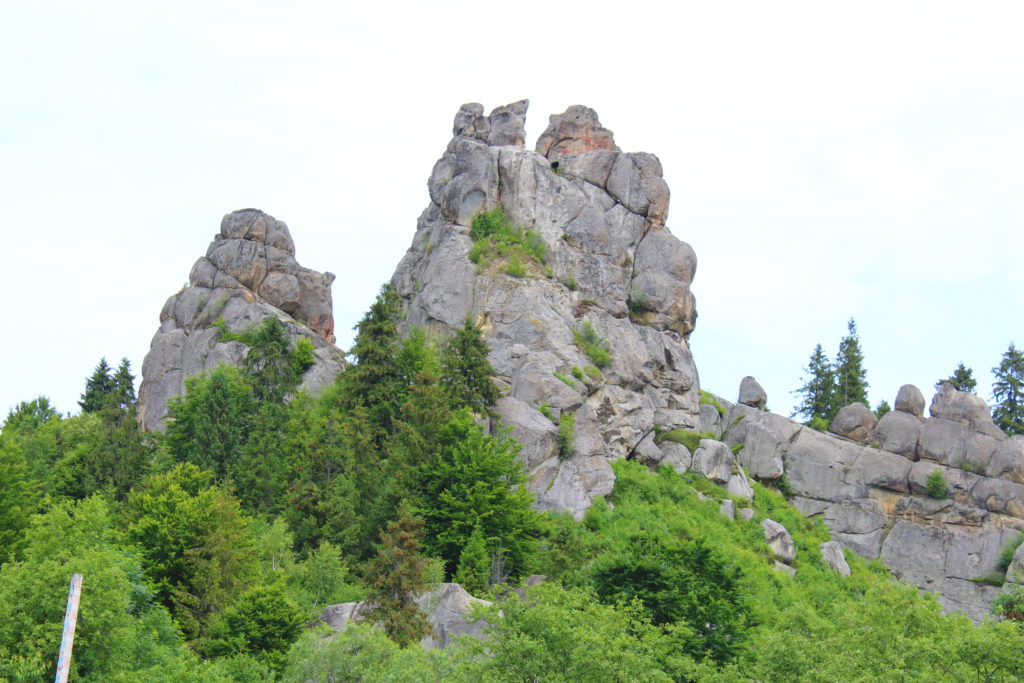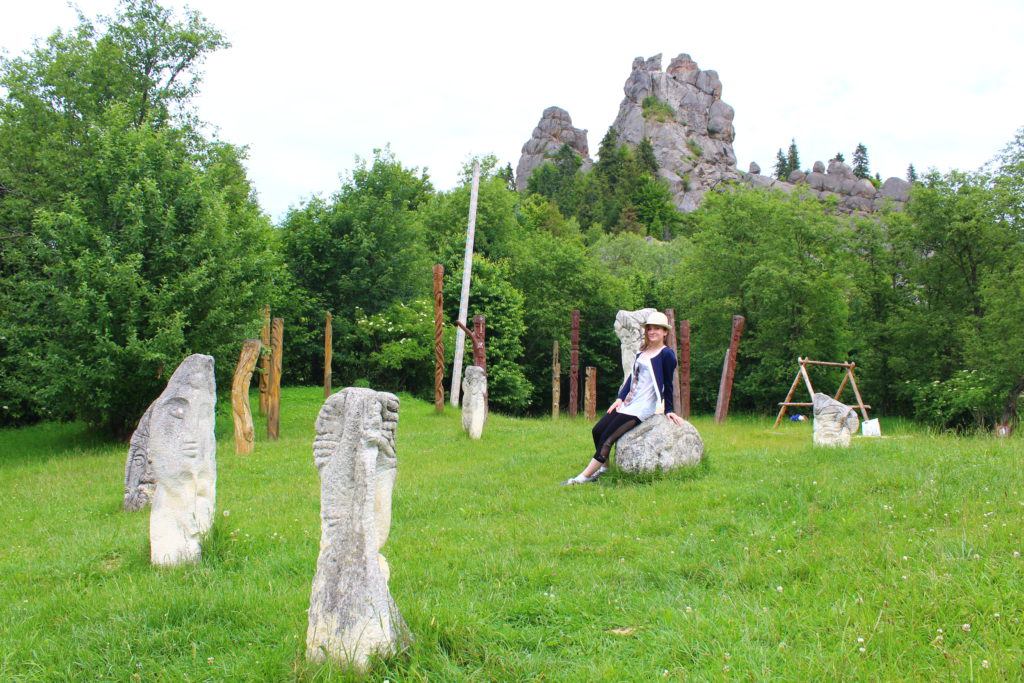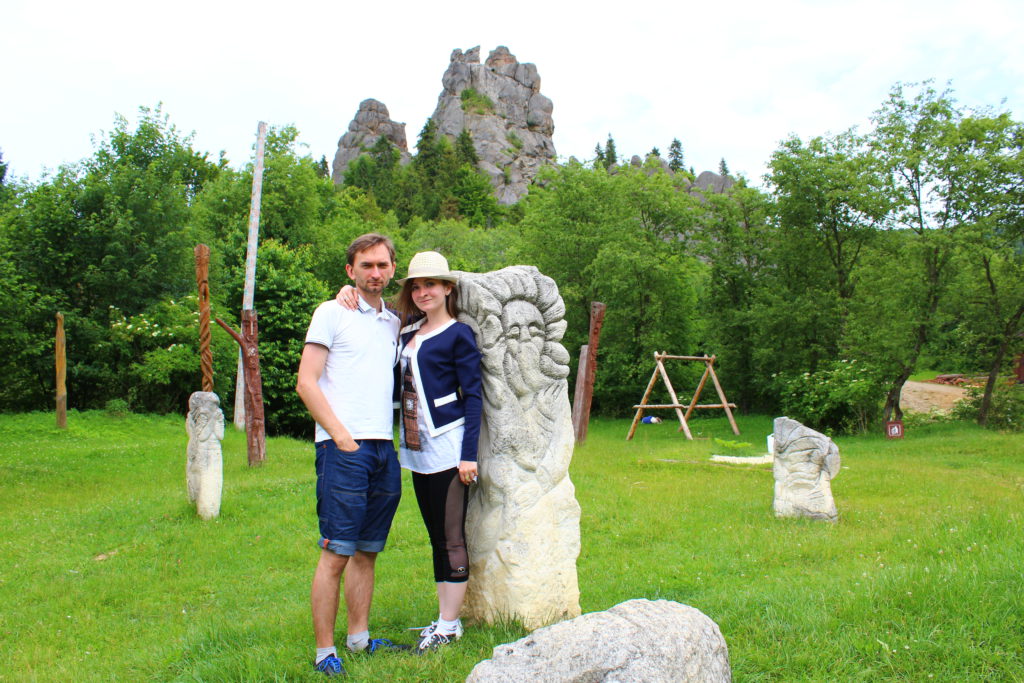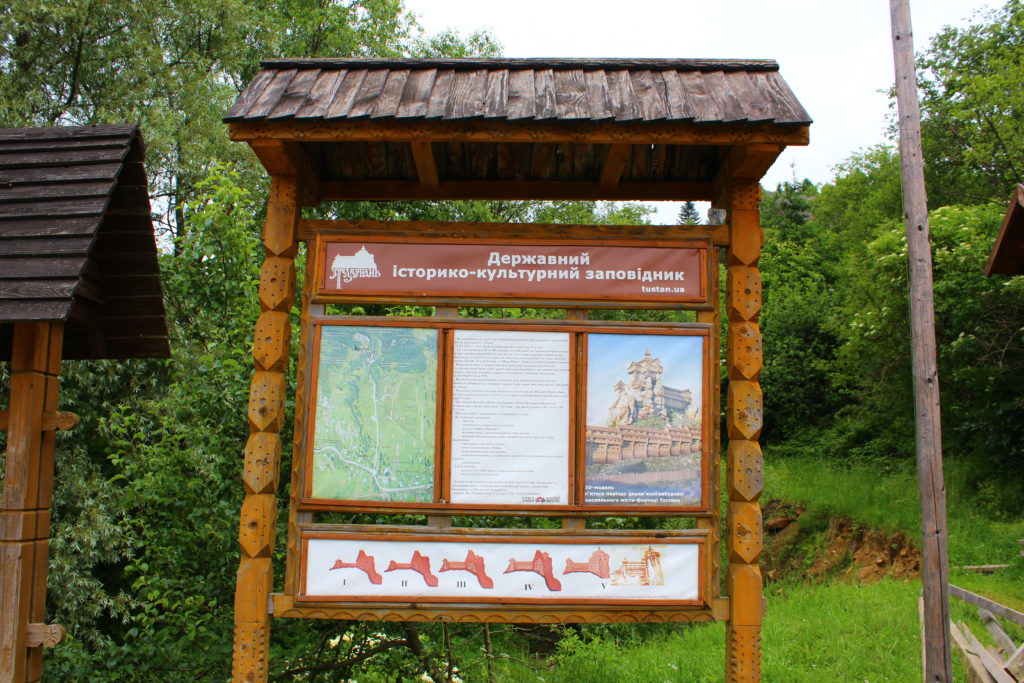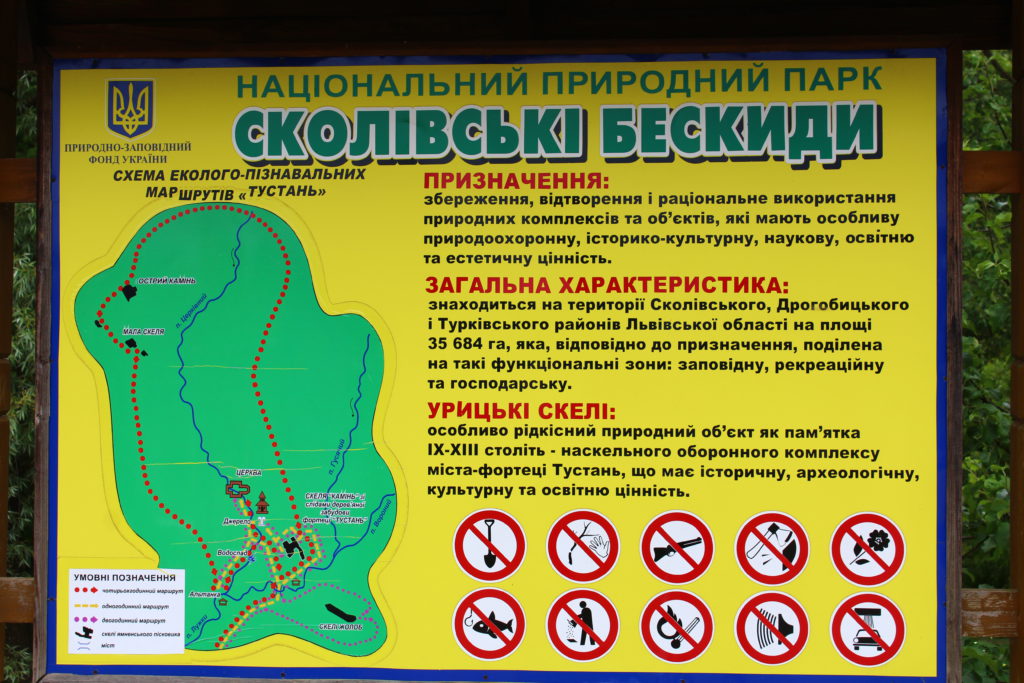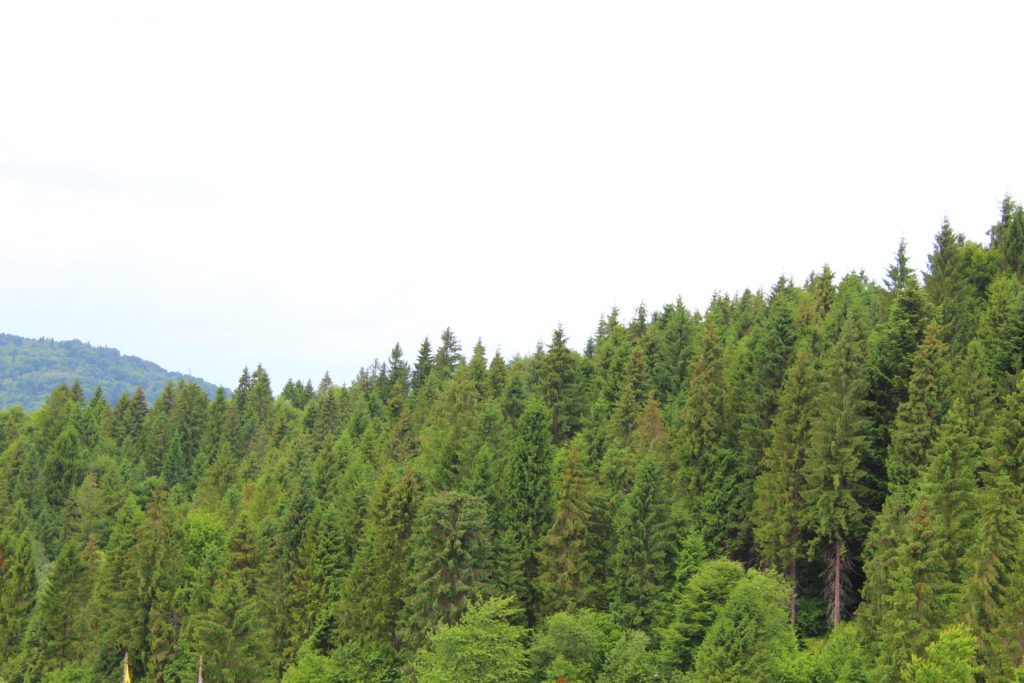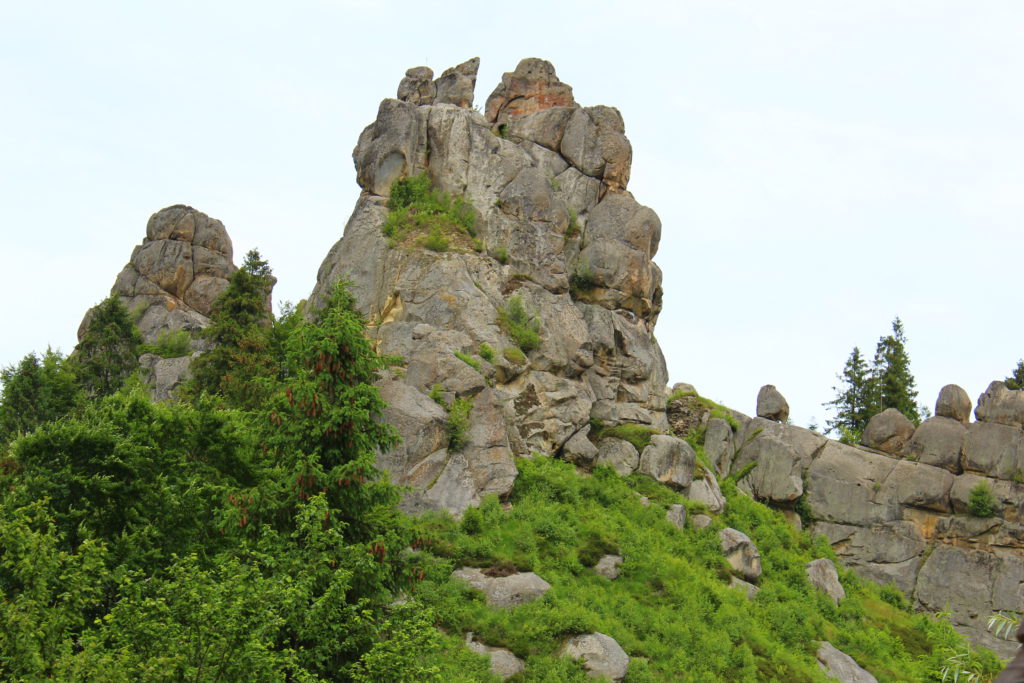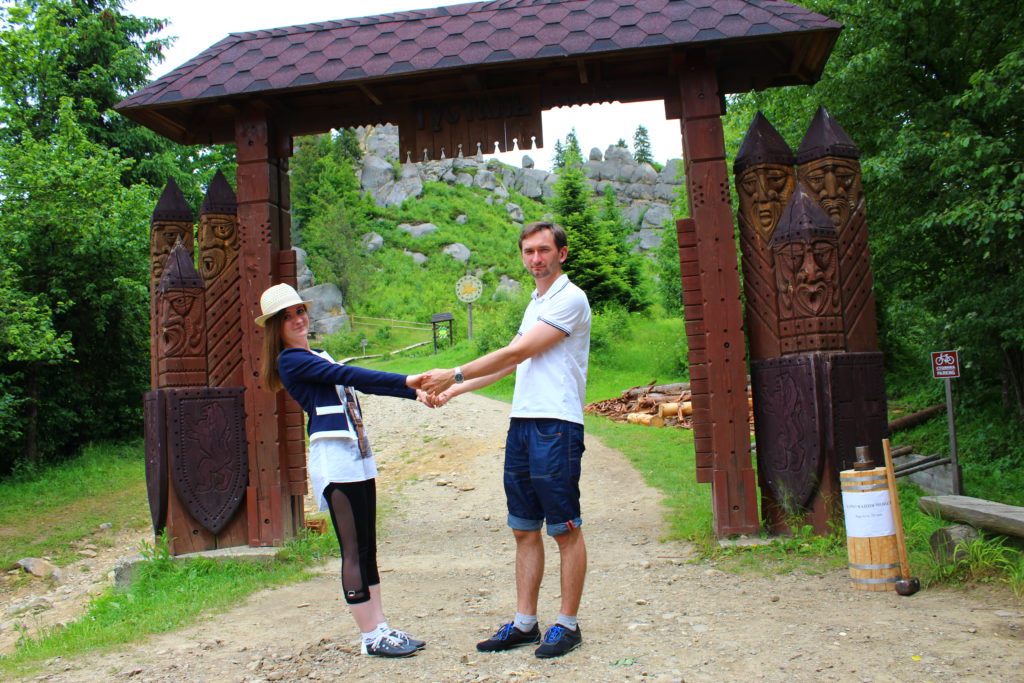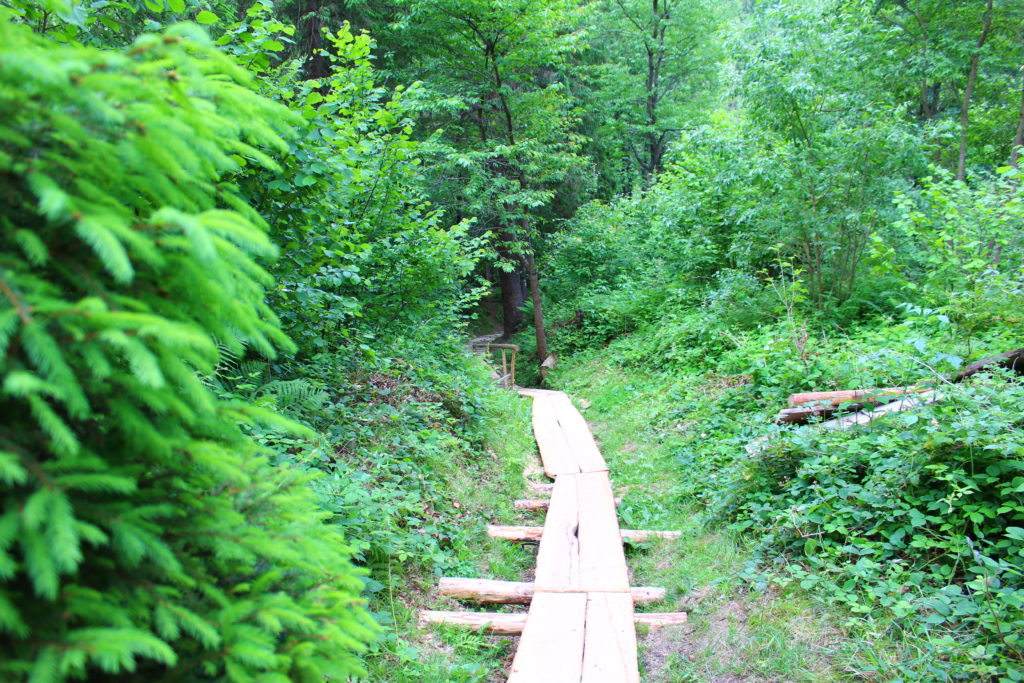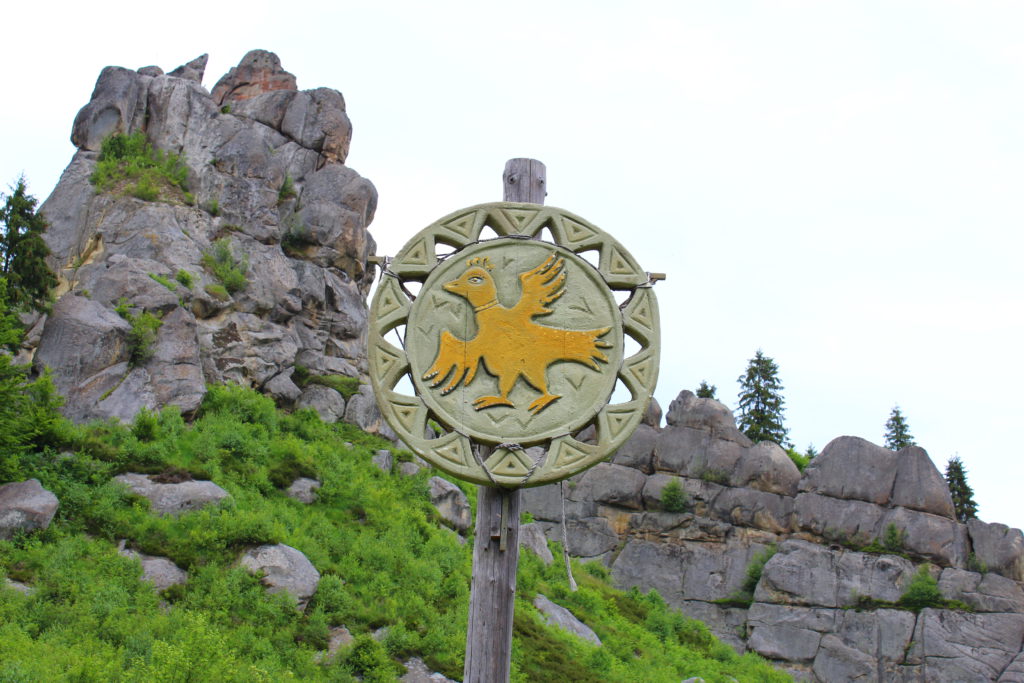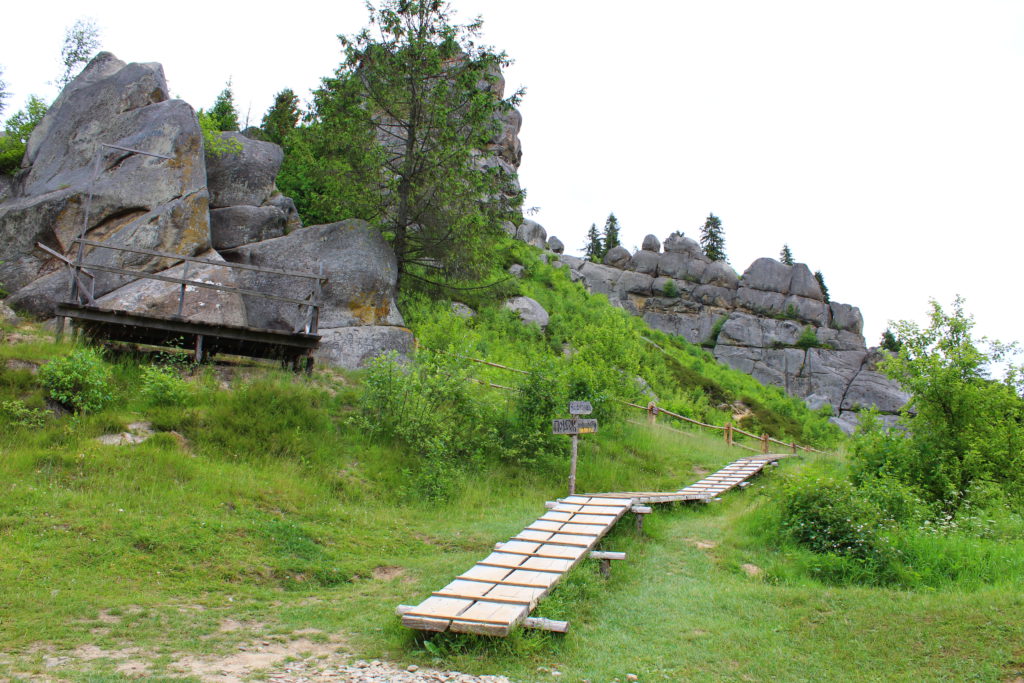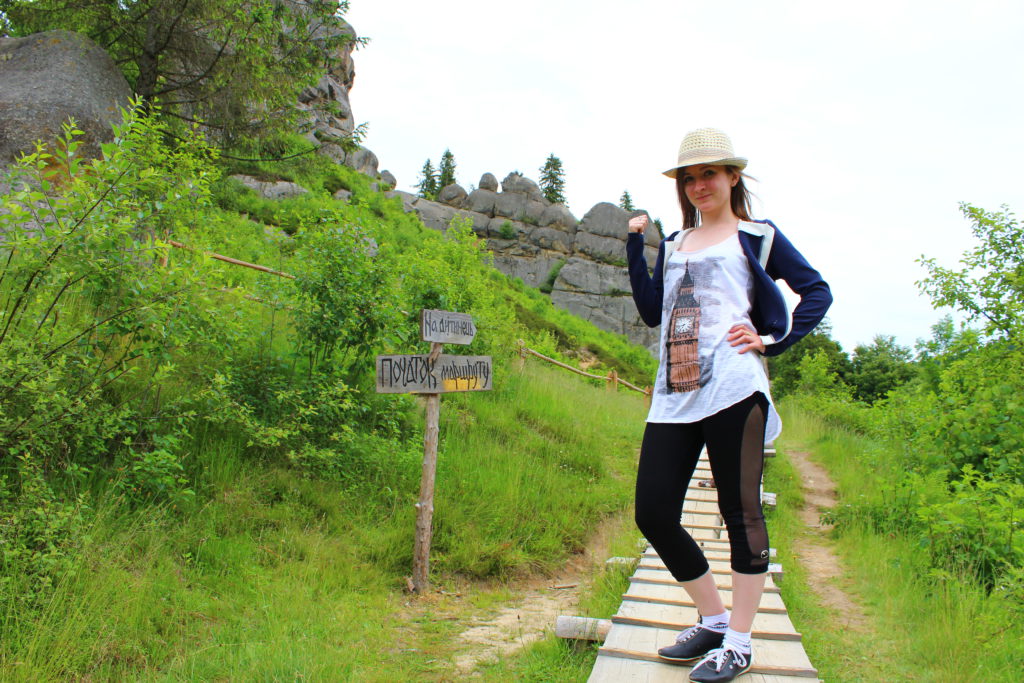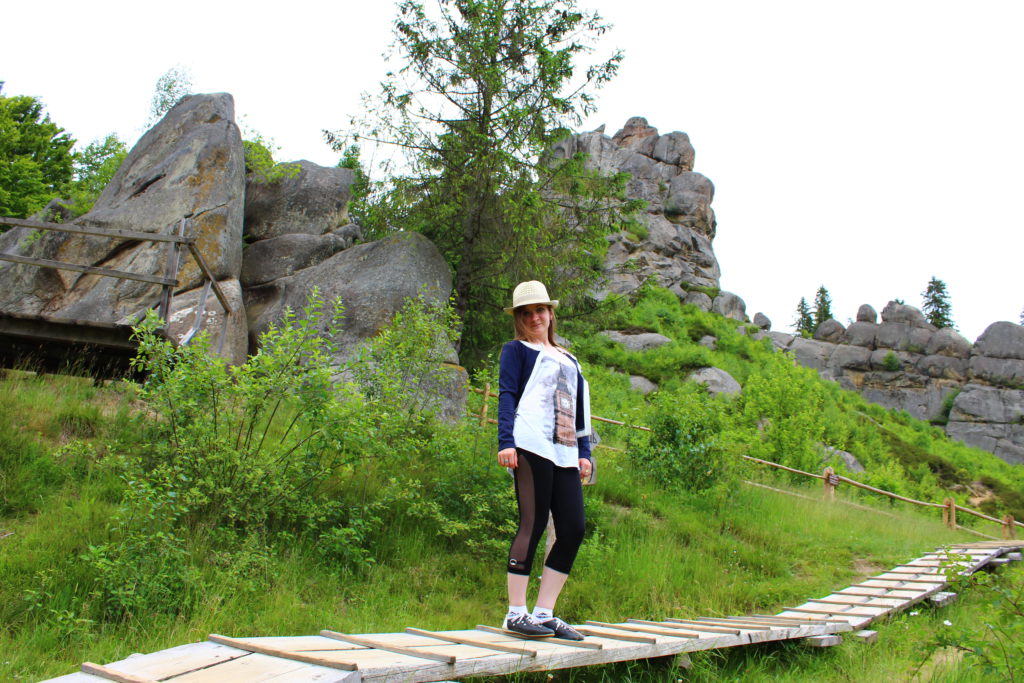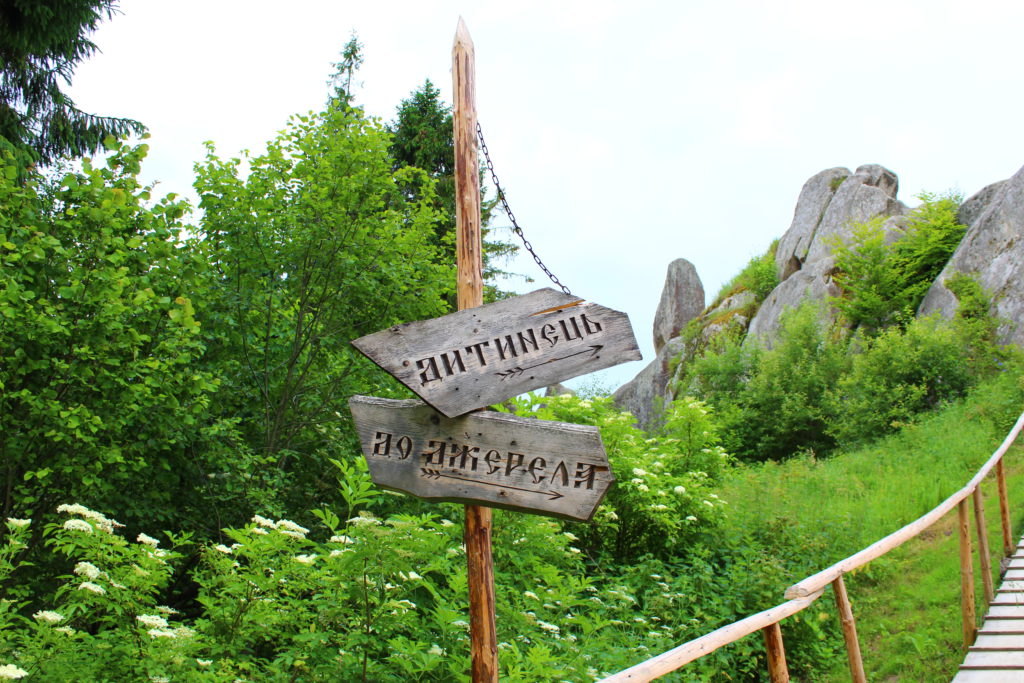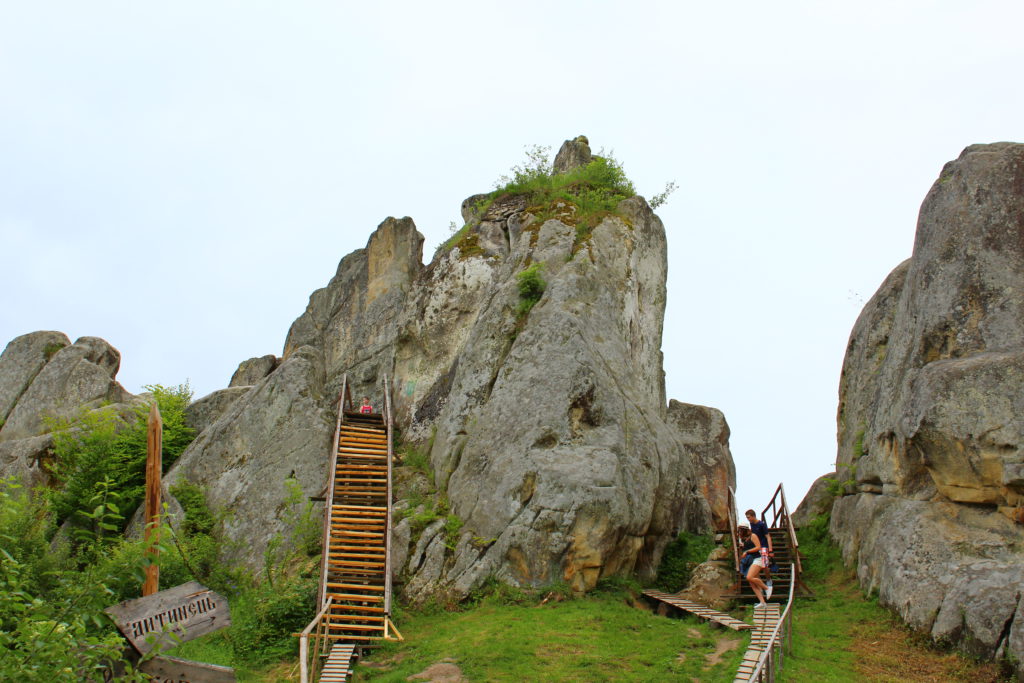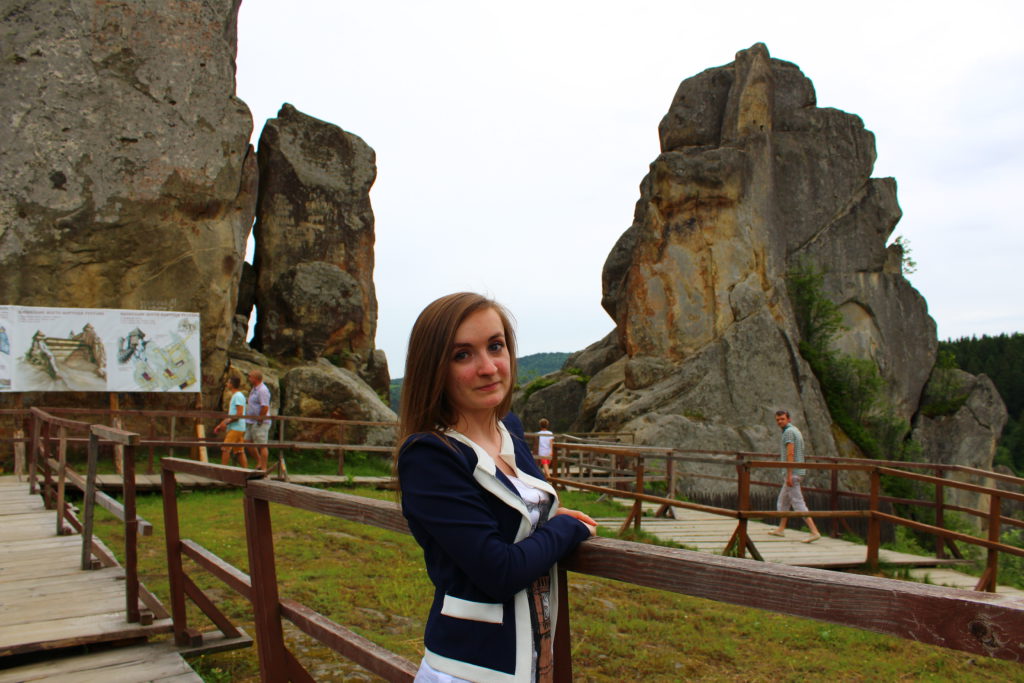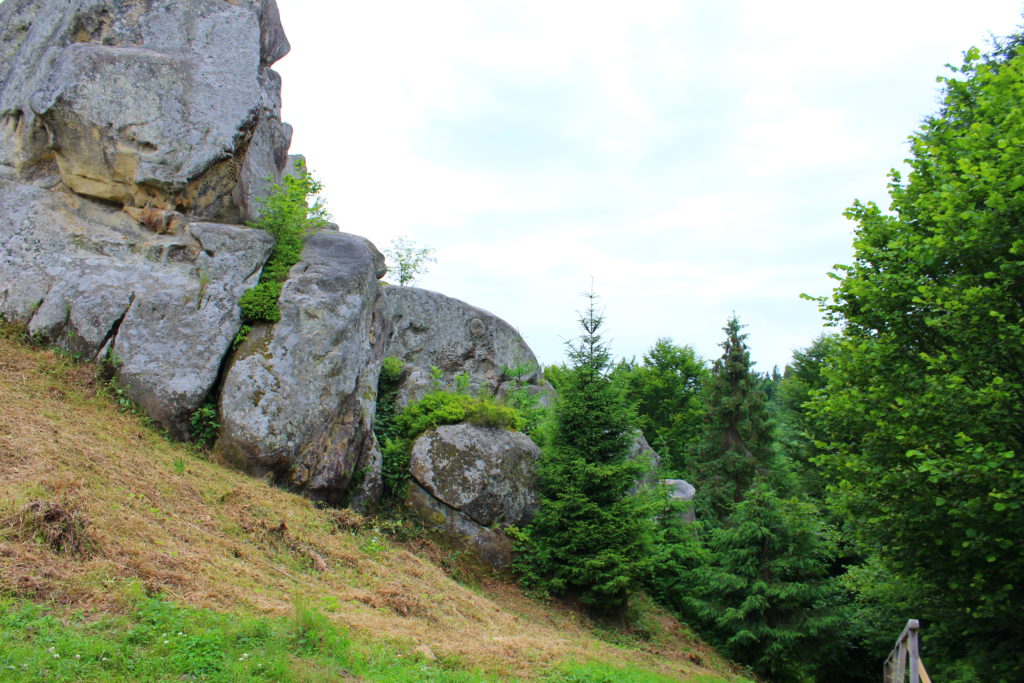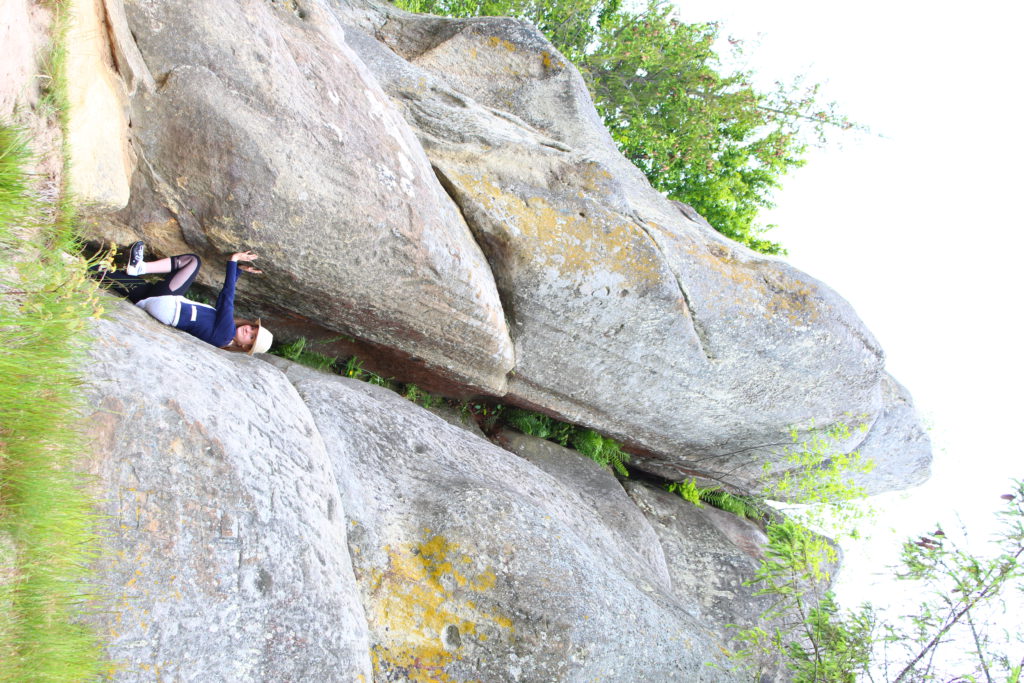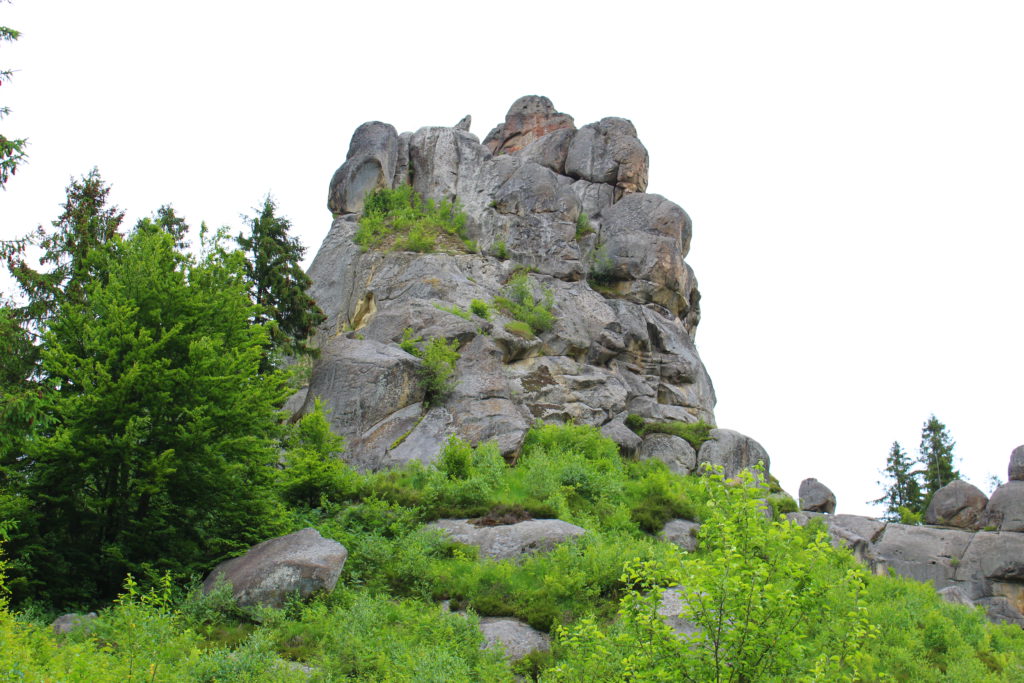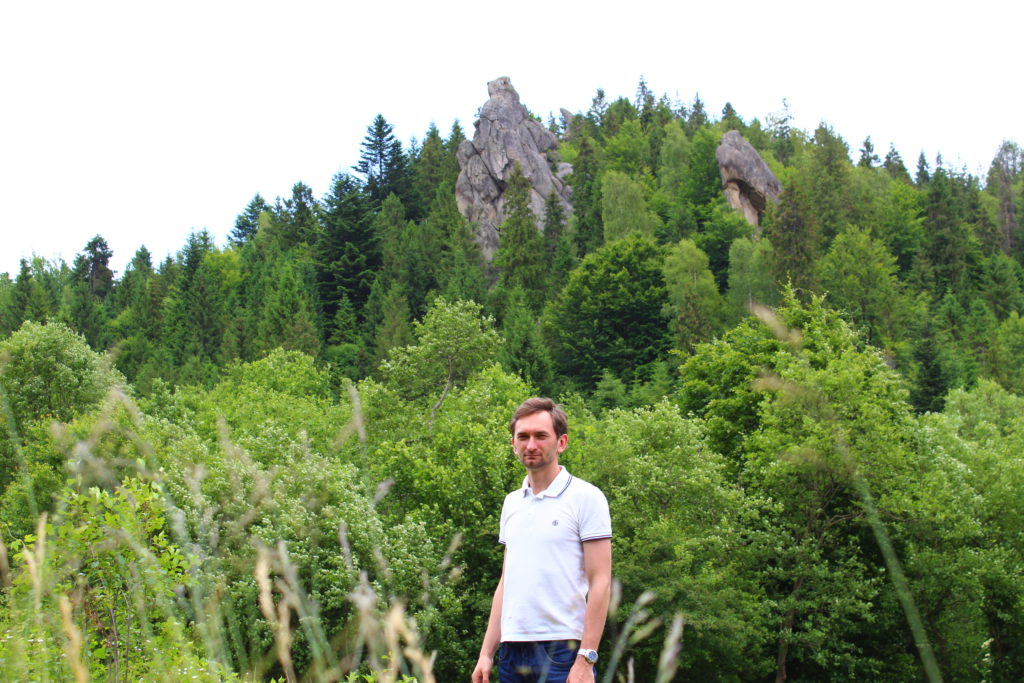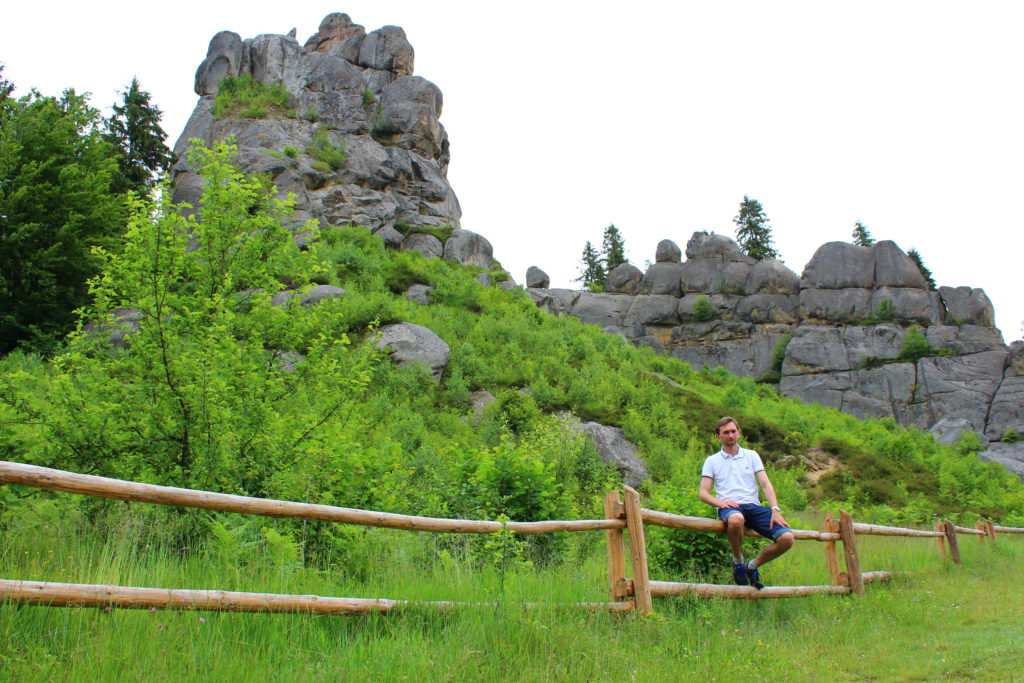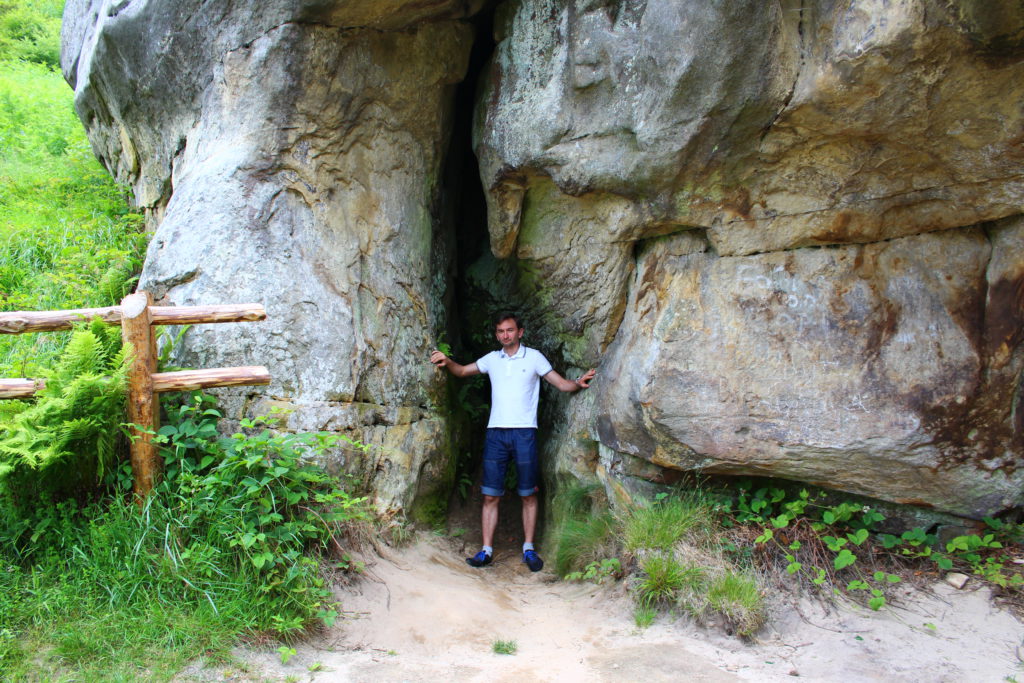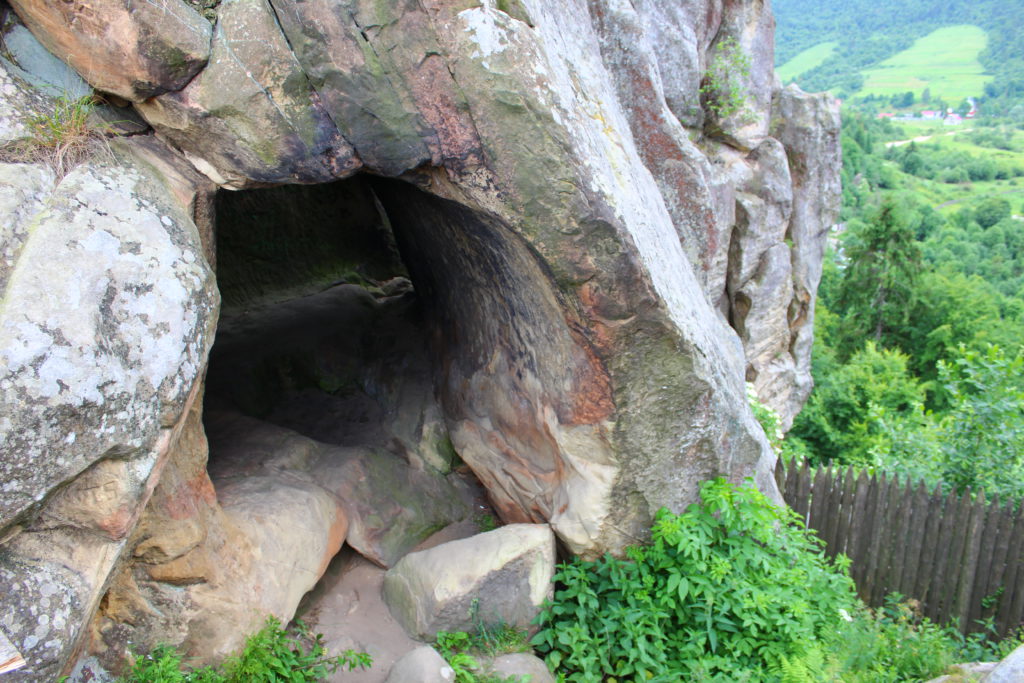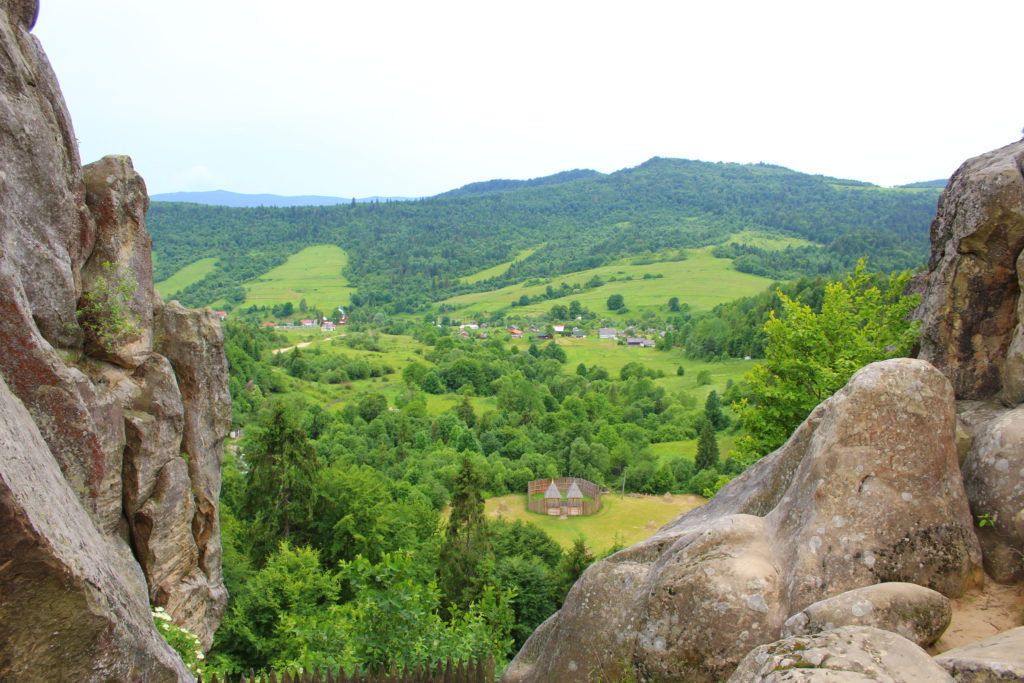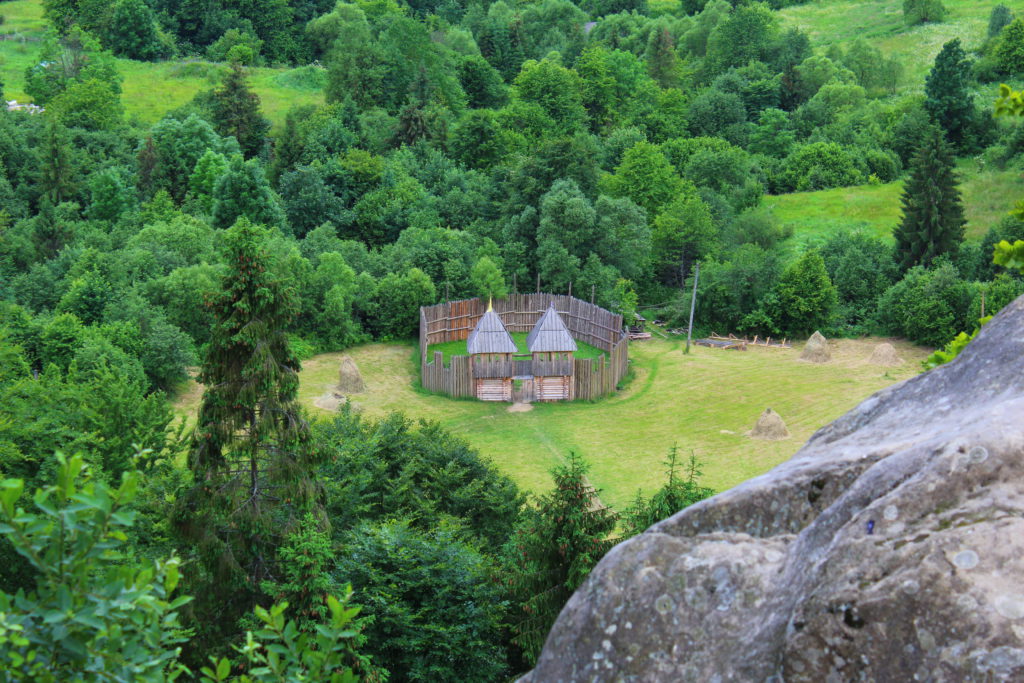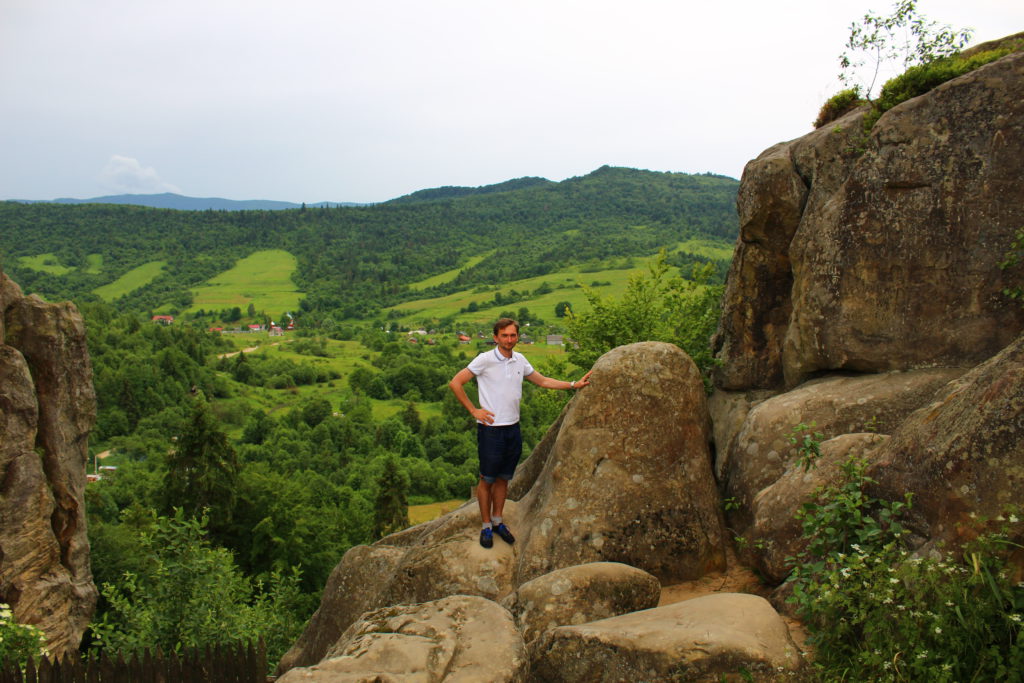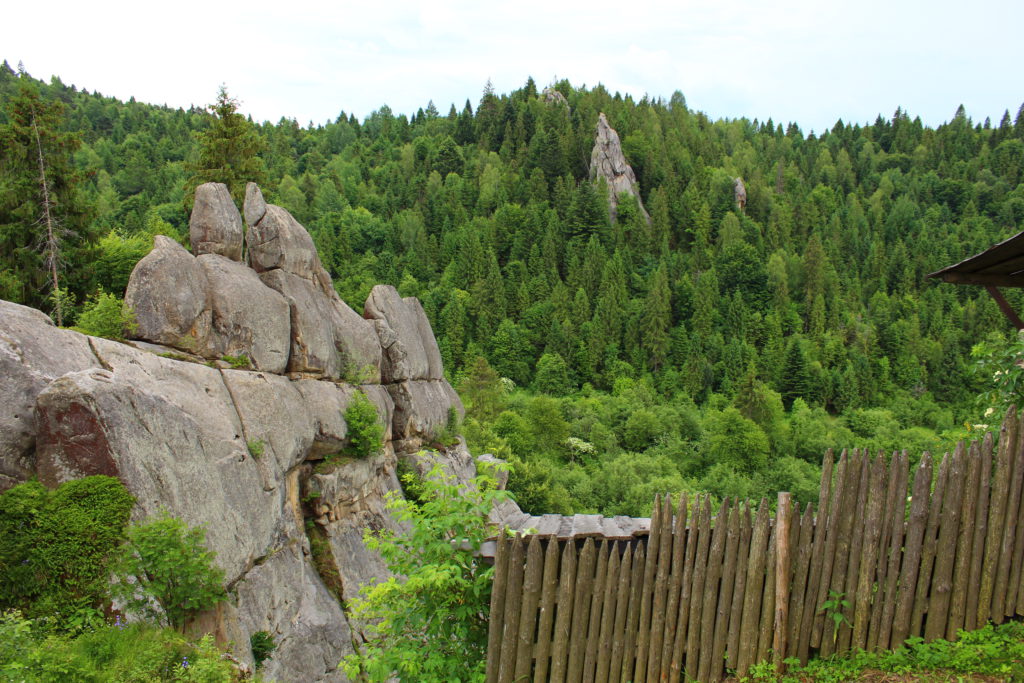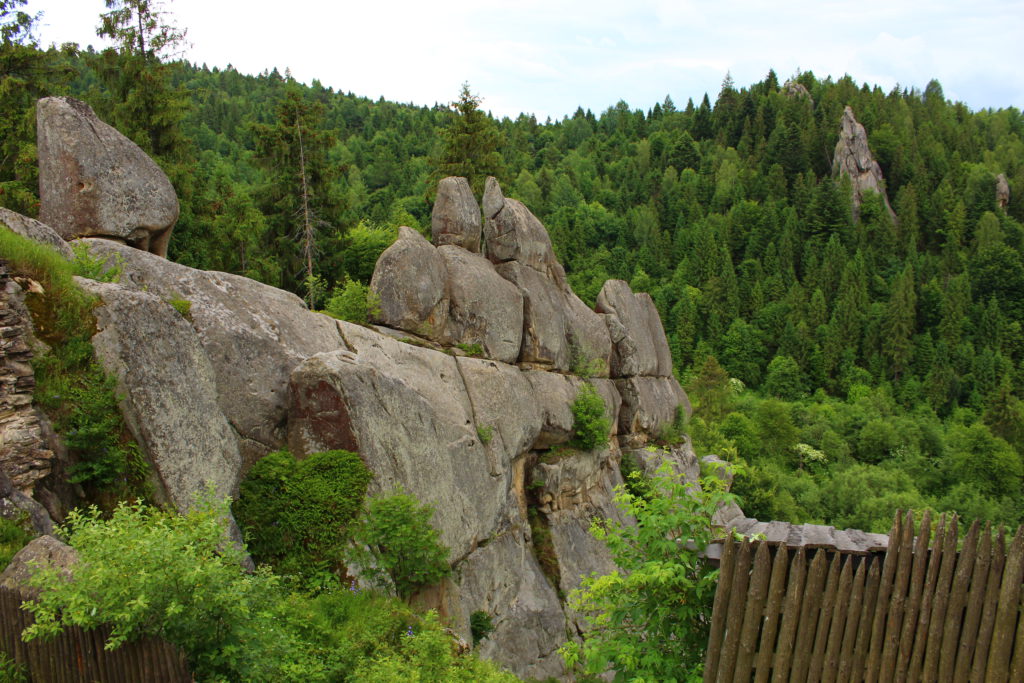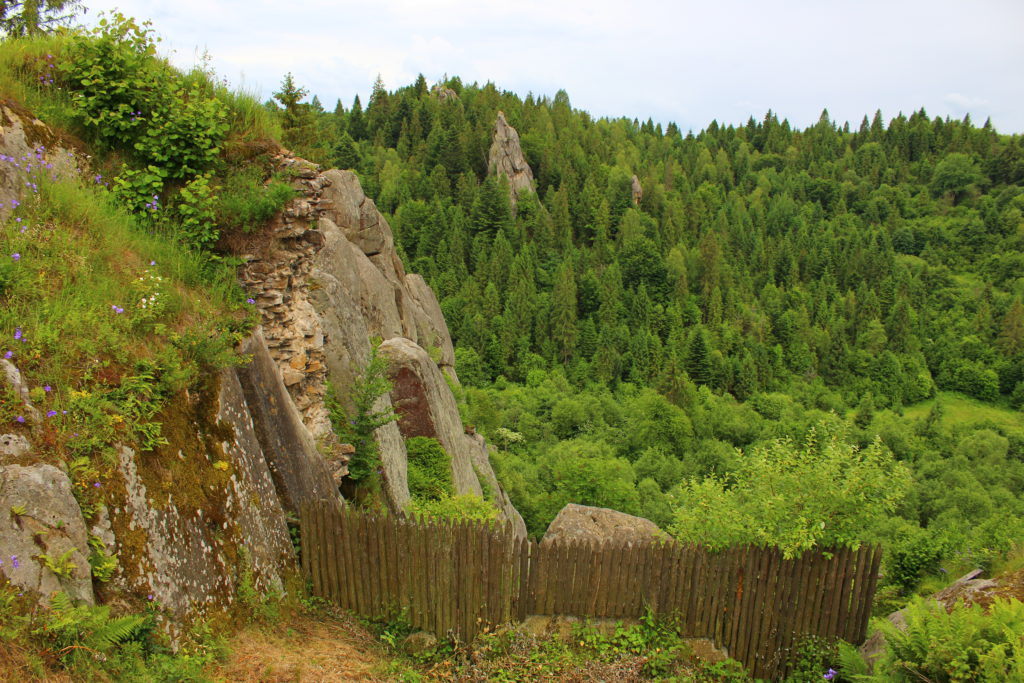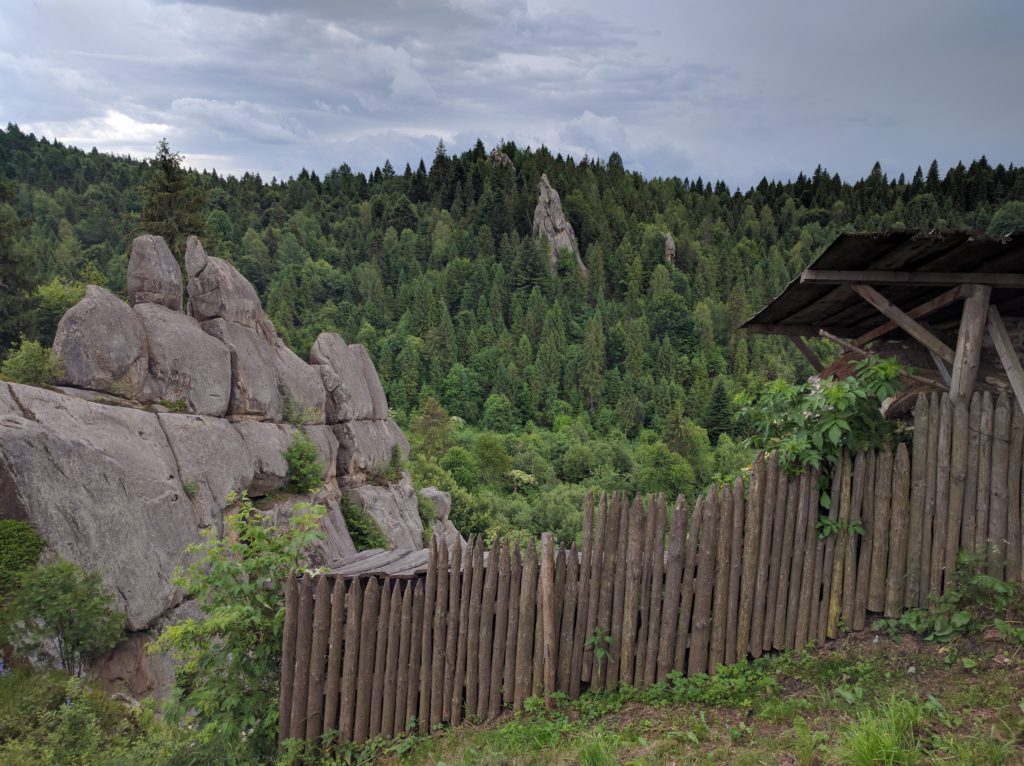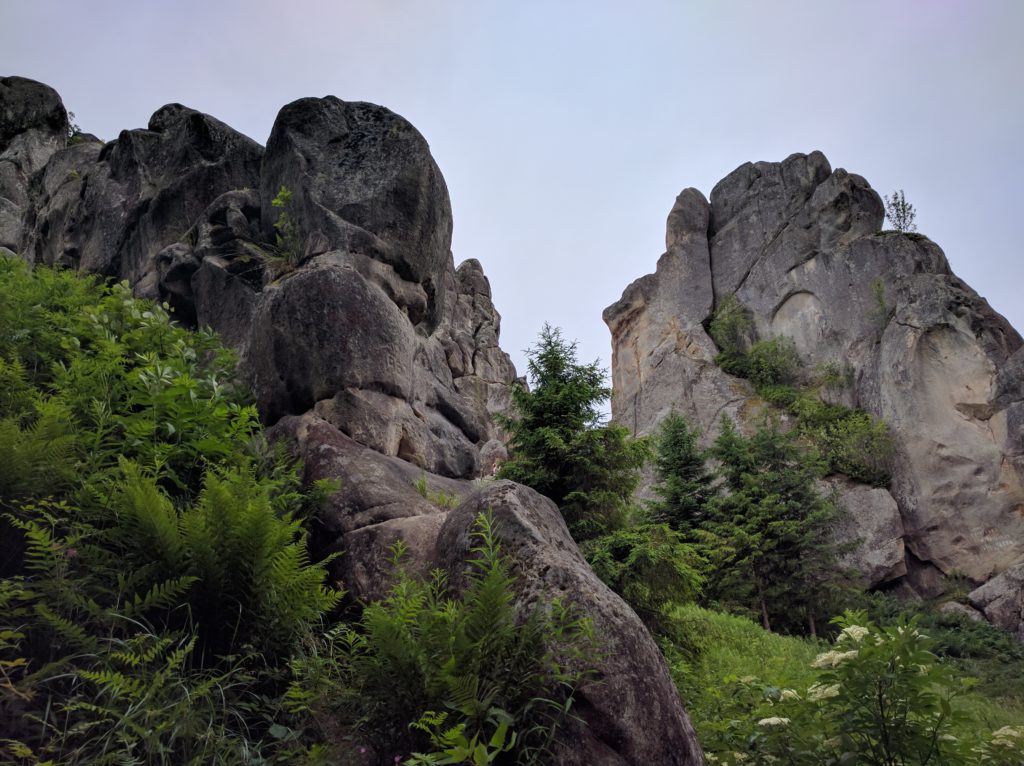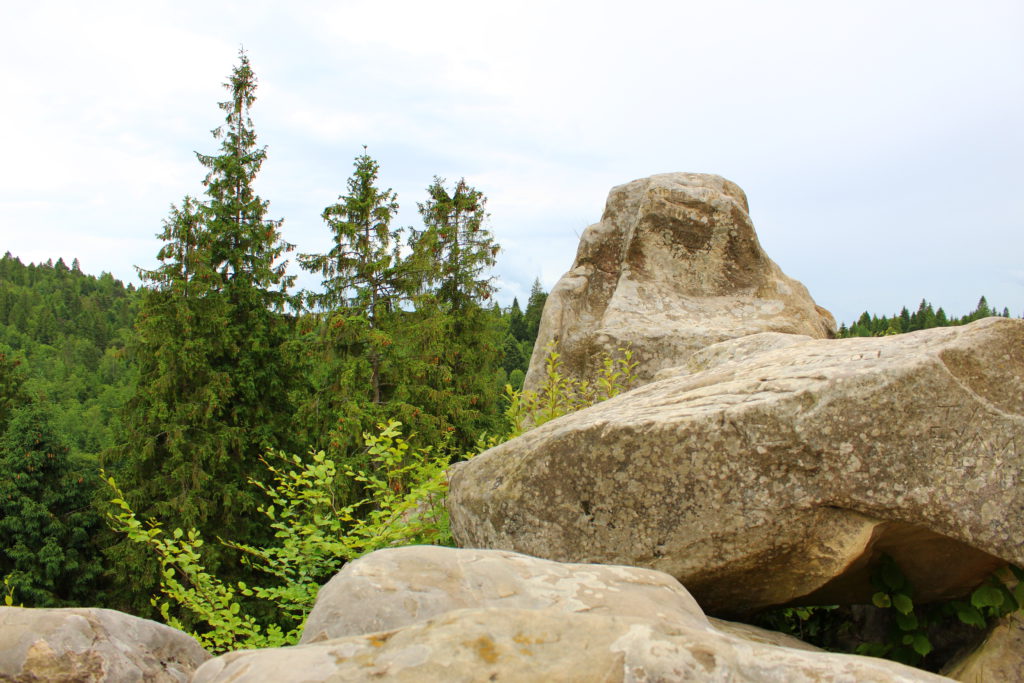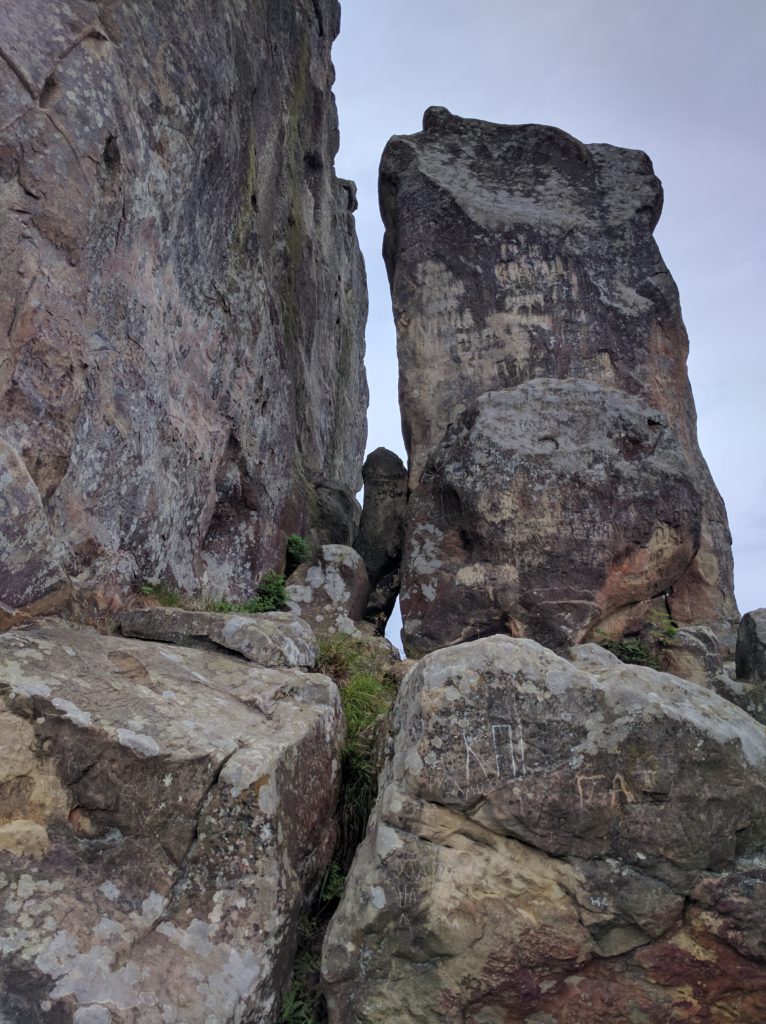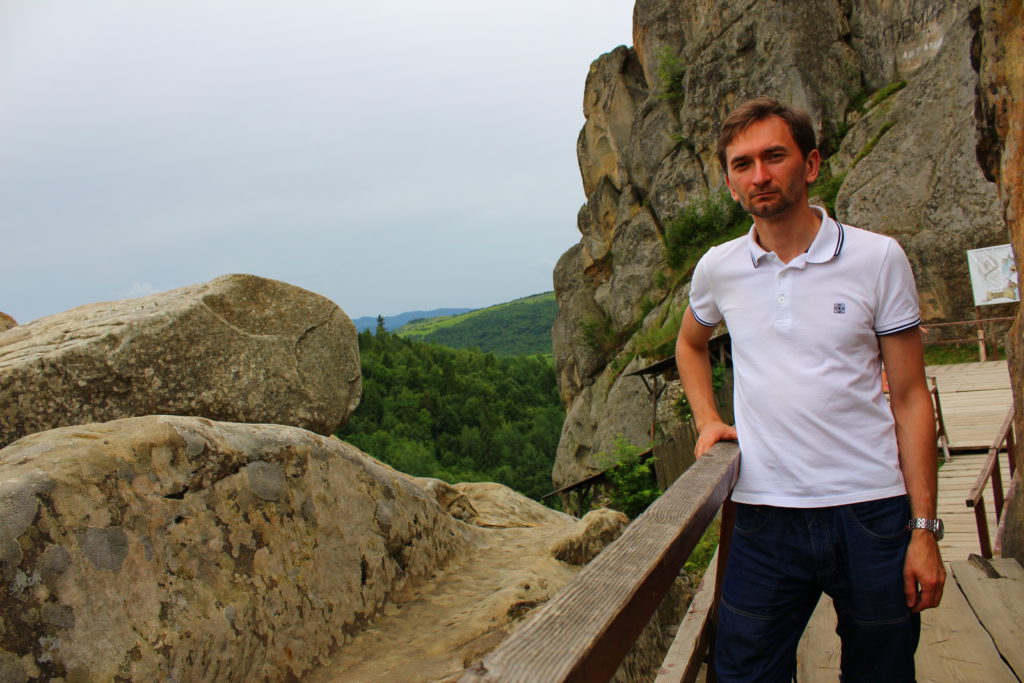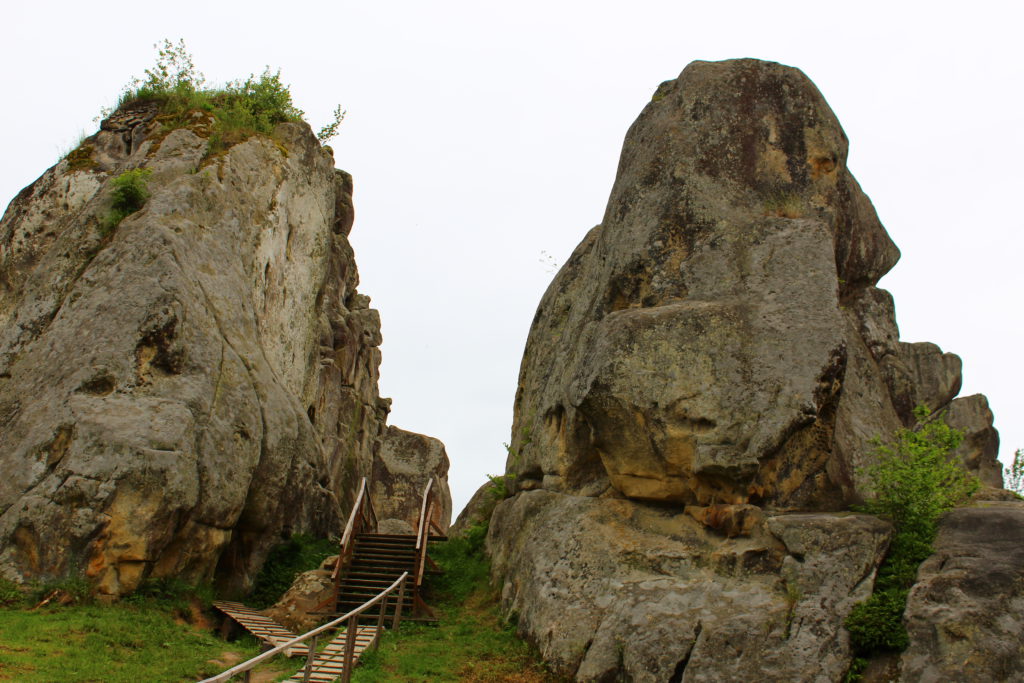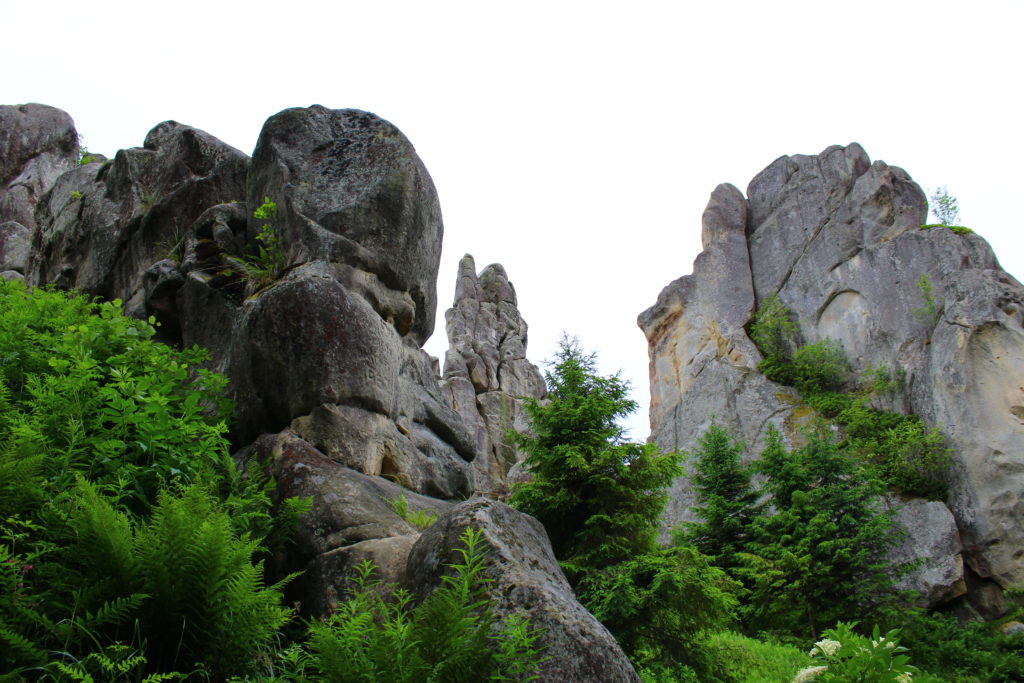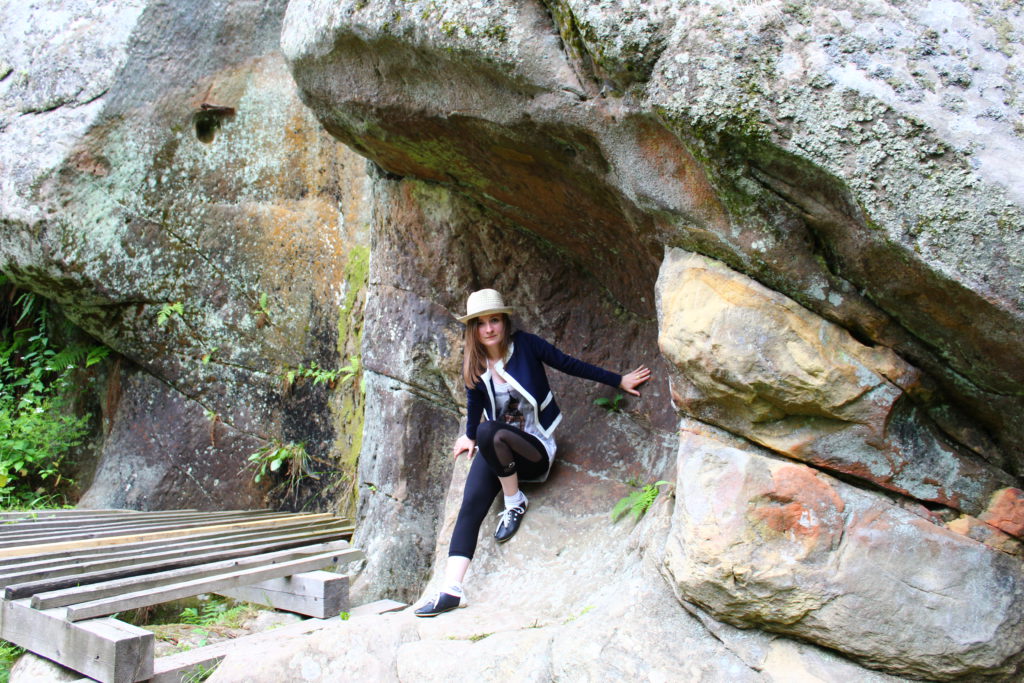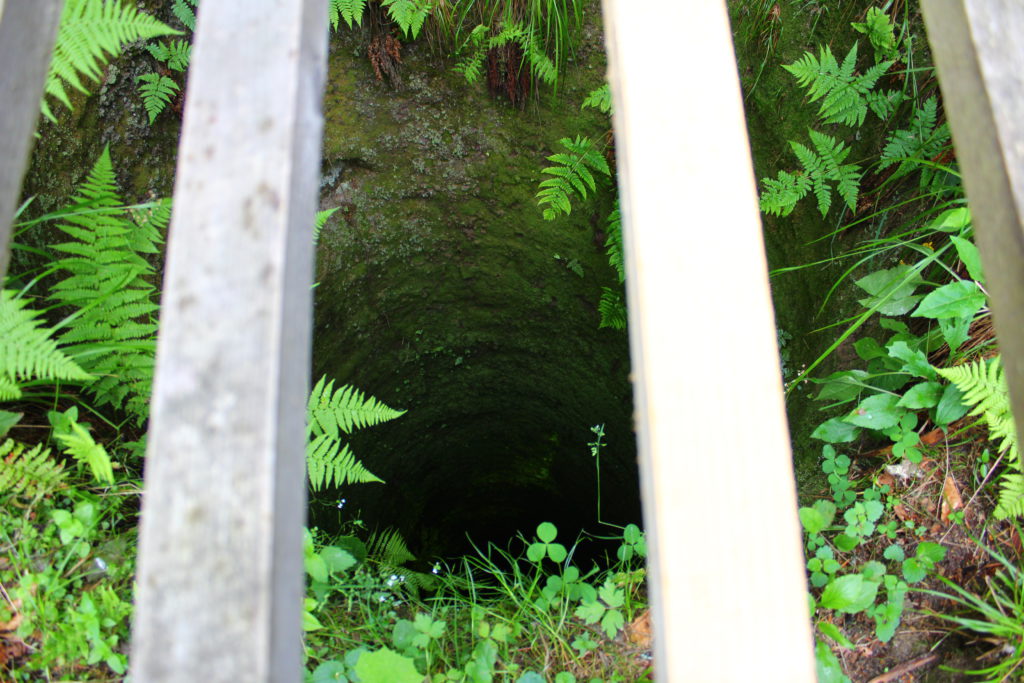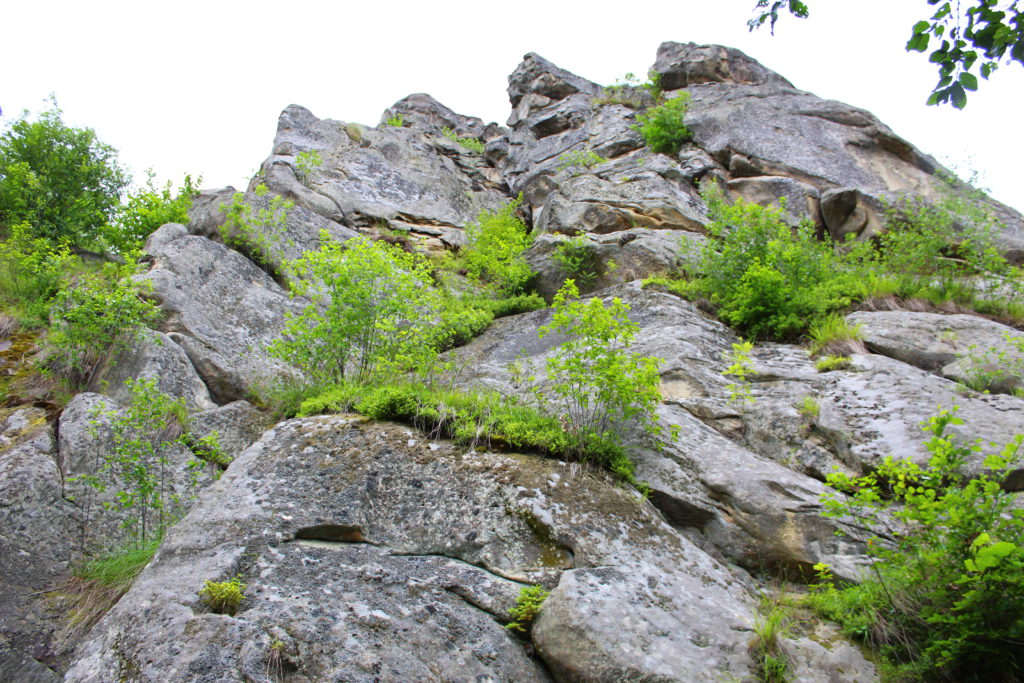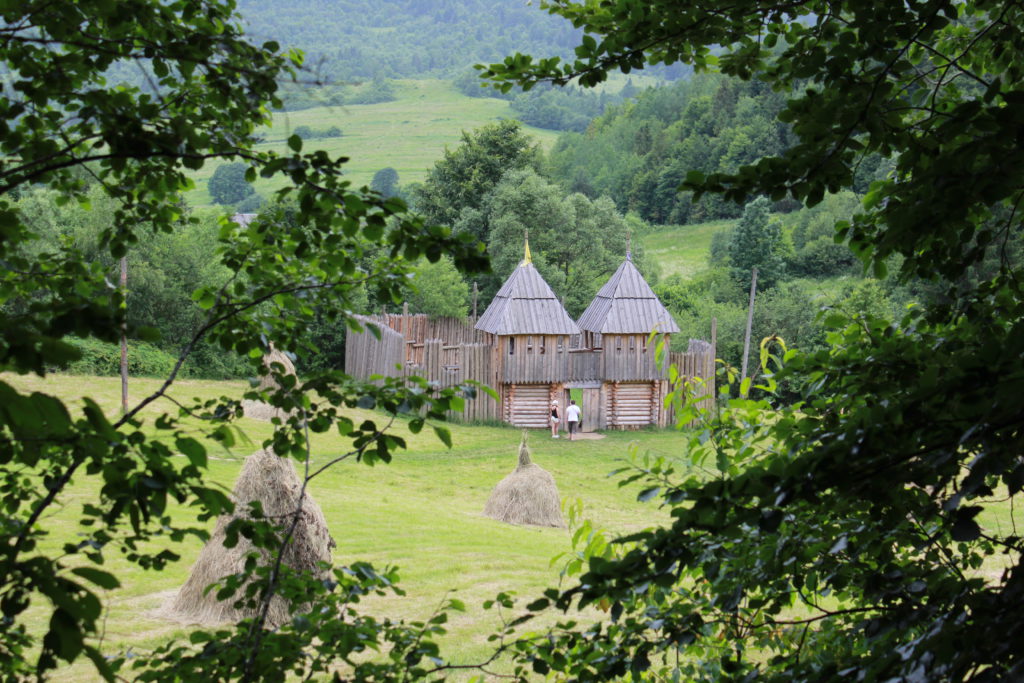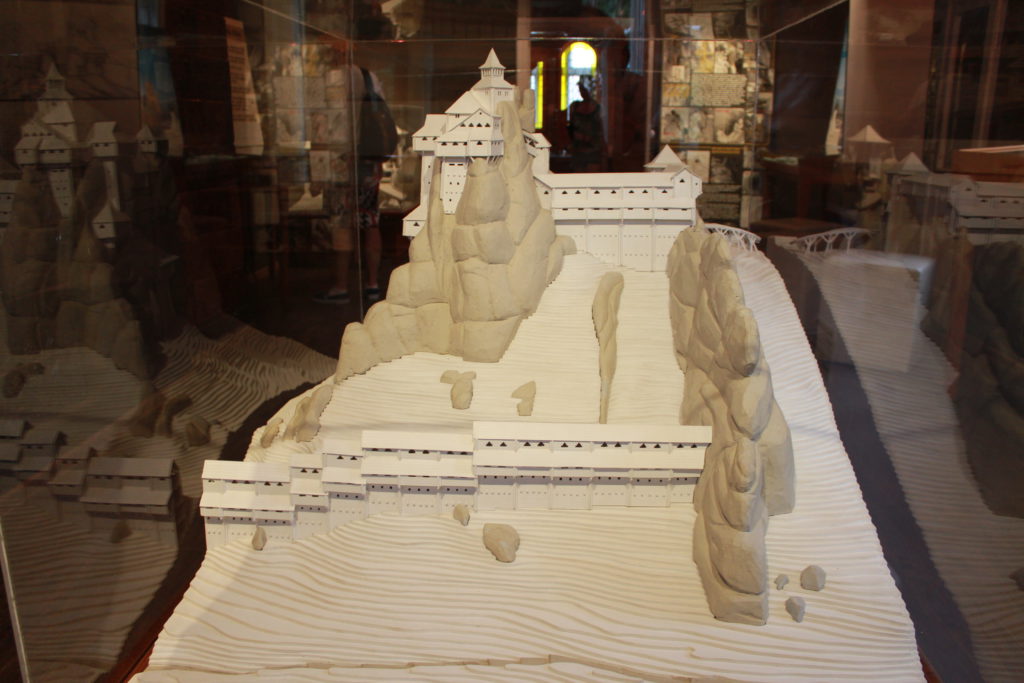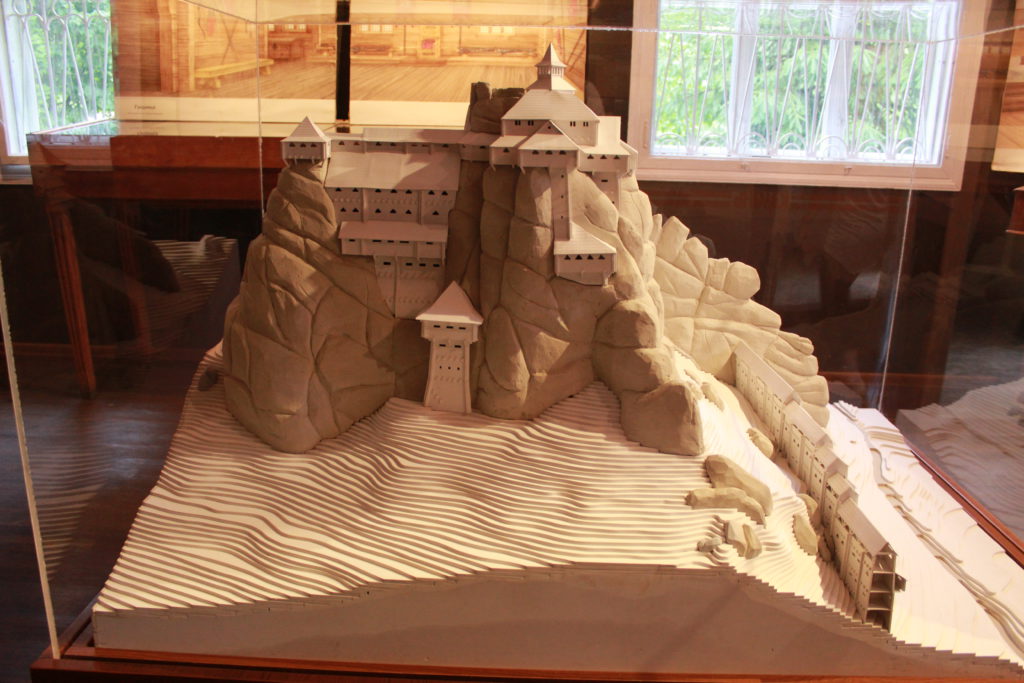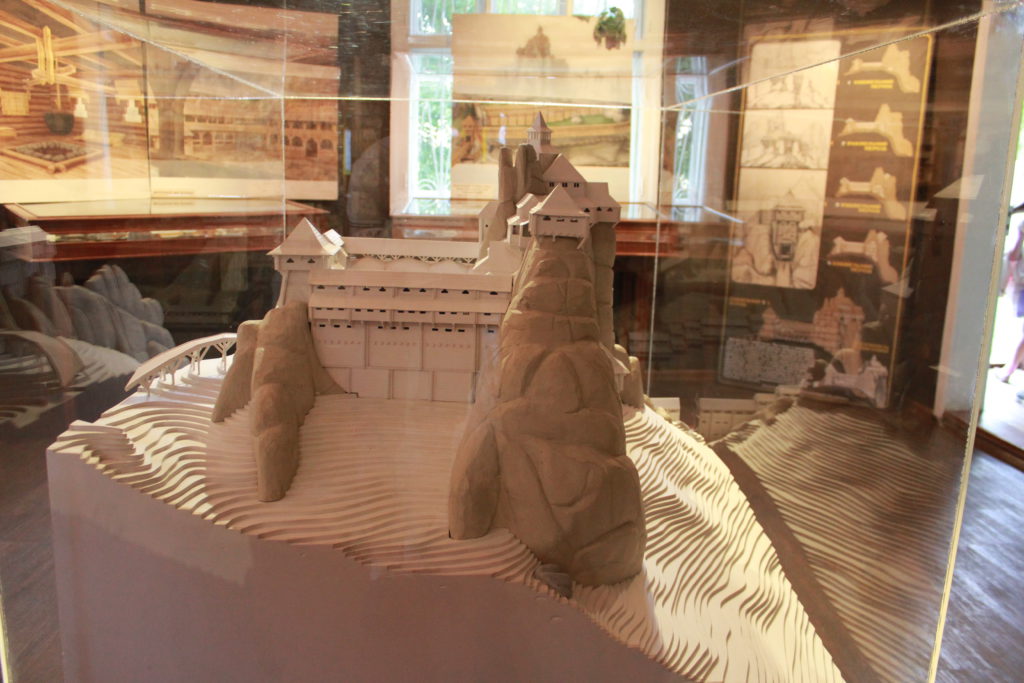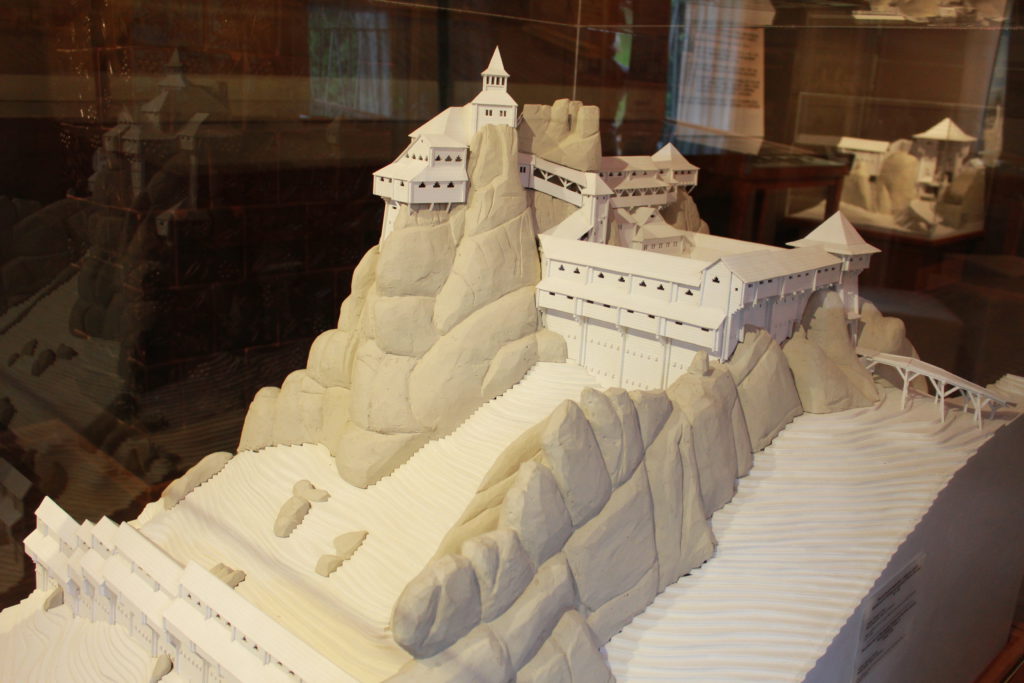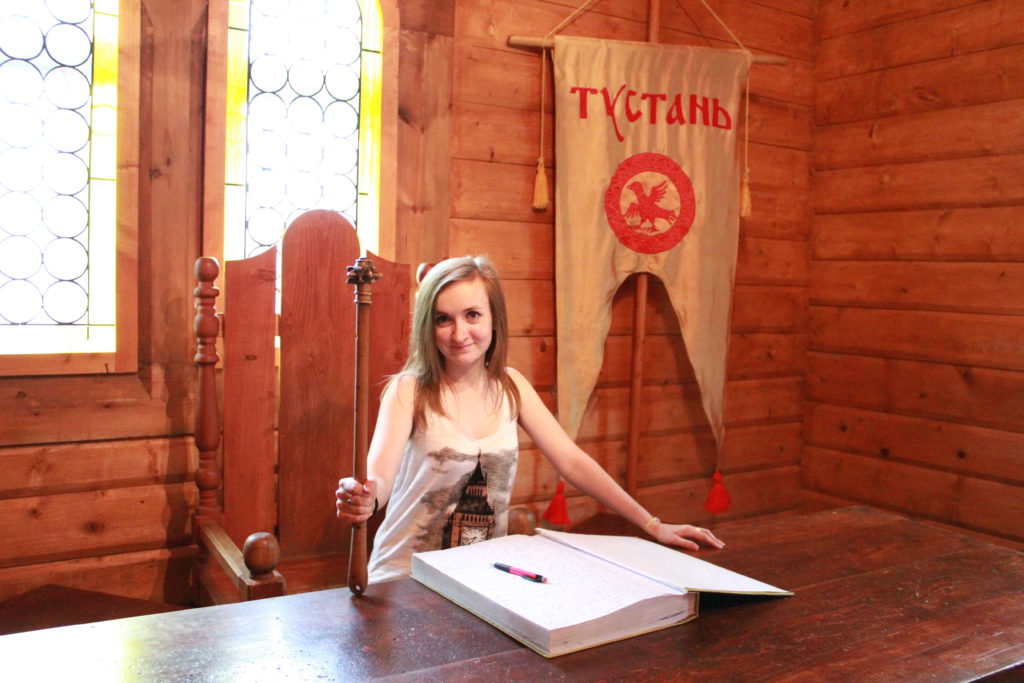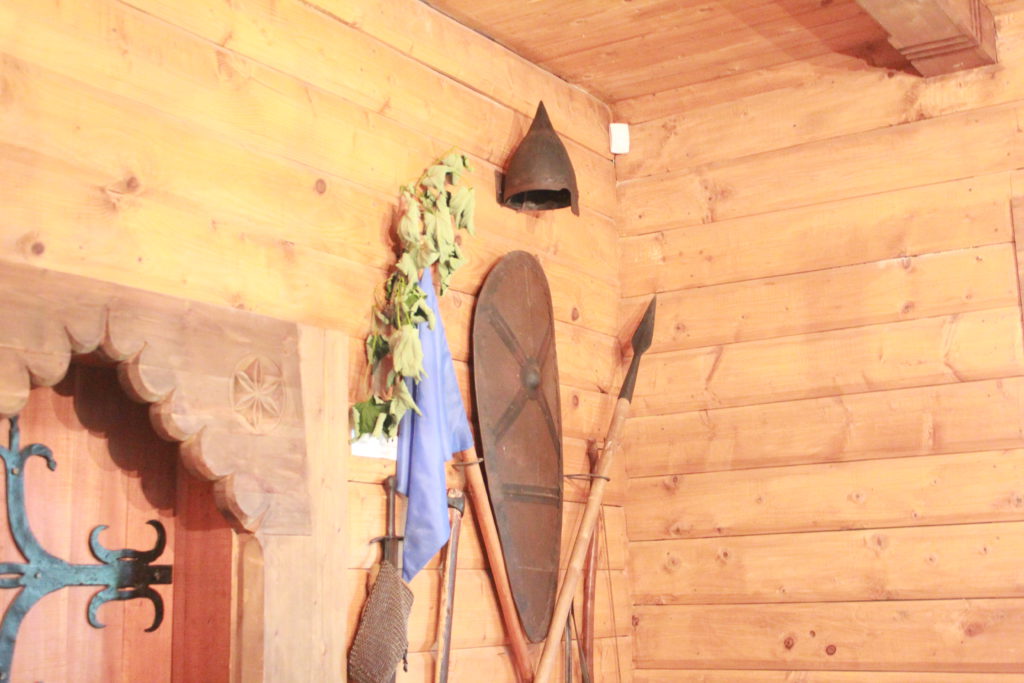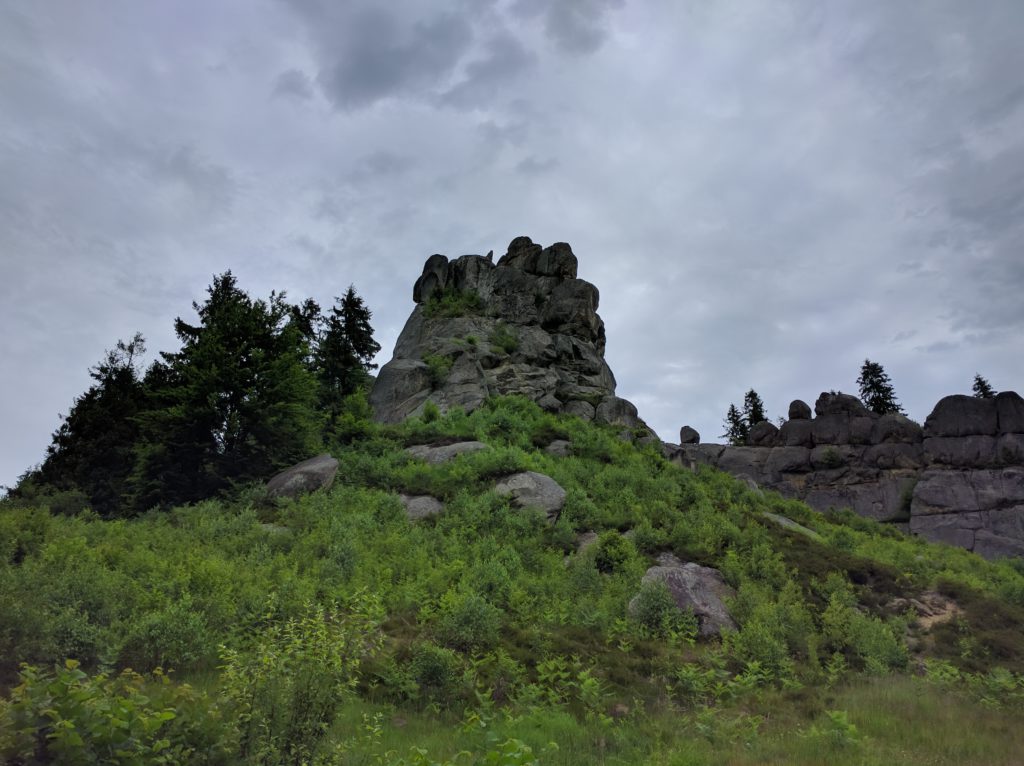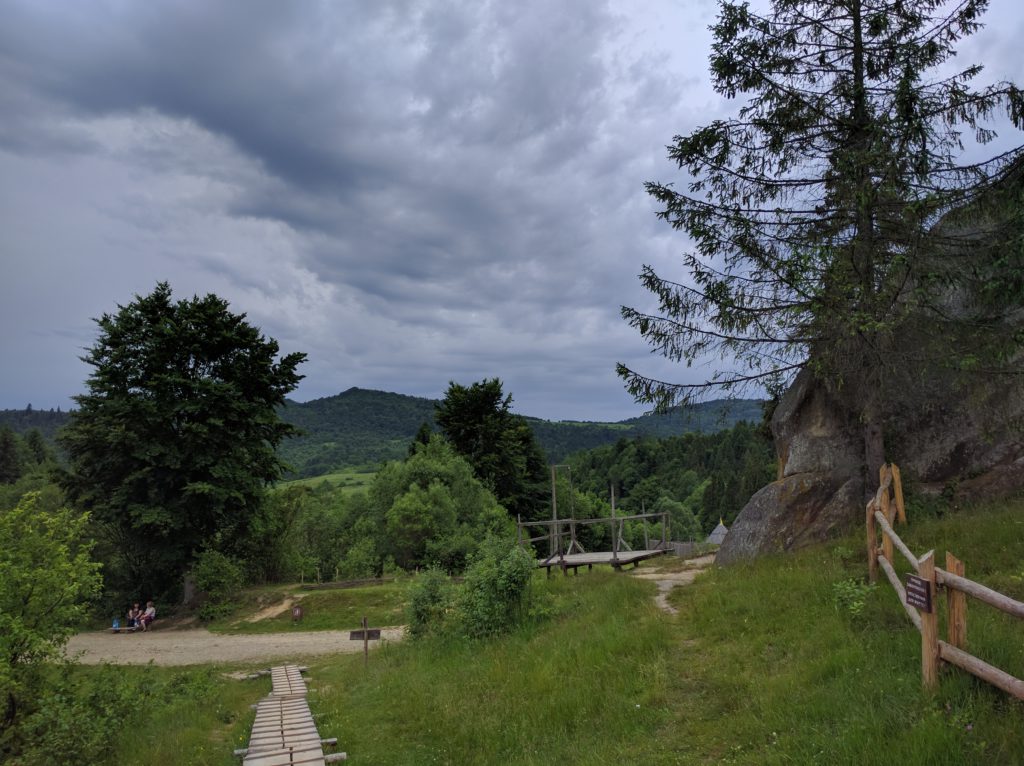Tustan. The uniqueness of this fortress is that it was built on the very top of the rock. Once Tustan fortress was a powerful Western defense of Kyivan Rus. It is one of the places that symbolizes Ukrainian power and the desire to defend its land and dignity. Tustan is an extremely interesting and mysterious tourist destination of Ukraine. Where is this unique place and how to get there? How was the fortress built? What was the function of this fortress? What secrets does it hide? And why did the fortress disappear? Now let’s try to uncover these issues together.
Tustan is a unique monument of history, archeology, architecture and nature. It stands among the forest and is part of the State Historical and Cultural Reserve. Once there was a powerful defensive fortress.
How to get to the Tustan rocks?
The Tustan rocks are located in the Ukrainian Carpathians (called Skhidni Beskydy), in the Lviv region, about 1 mile (1,5 km) from Urych village, 120 km/75 mi from Lviv city.
The most comfortable way to get to the rocks is by car (from Kyiv to Tustan – 580 km/360 mi). Also you can take a bus from Lviv (to Lviv by train) through Skhidnytsia to Urych village. The trip will take about 3 hours.
How and when did the Tustan fortress appear and who built it?
In the IX century, the tribes of white Croats, who were descendants of the Scythians and Sarmatians, came to this place. They began to build the Tustan wooden fortress on the rocks. Since then, the history of Tustan began.
Kyivan Rus was a powerful and strong state, defended by brave warriors and powerful fortresses. One of those fortresses was Tustan. It was located among the forests of the Carpathian Mountains, where ran a salt trade route: from Drohobych to Western Europe, and a part of the Portugal-China silk path in the IX-XIII centuries.
Once Tustan was a strategic point of the defense line, customs (here they collected taxes for salt and taxes for cattle). It was also an administrative center, and a large part of the trade routes were controlled here.
During the reign of Prince Danylo Galician fortress was strengthened by stone defensive walls. Tustan turned into an inaccessible stronghold that standed through the numerous Mongol-Tatar invasions, and was never conquered.
Where does the name “Tustan” come from?
There are different versions of the fortress name origin. The most likely one we consider the version of the Polish historian Stanislav Sarnytsky. He suggested that the name went from the phrase “tut stan’’ (in Ukrainian) which means “ to stop here”. And as the fortress was also a customs, this version sounds really possible. Everyone who came to the fortress, was told to stop and to pay some taxes for transportation of goods through customs.
Why is Tustan considered a masterpiece of medieval architecture?
The Tustan rock fortress is a unique nature and architectural monument that had no analogues in Europe. This complex was the masterpiece of medieval builders.
Rock formations, which are powerful defensive walls themselves, were very well used in the construction. The gaps between the rocks were blocked by wooden walls, which closed possible approaches to the castle. Where the wooden structures were adjacent to the rocks, special recesses – cuttings were blown into the stone to secure the logs in the rock. The historical researcher Mikhail Rozhko succeeded to reconstruct the mockup of the fortress of that time by the cuttings in the rocks, although the wooden structures themselves have not existed for a long time. Thanks to the researcher Mykhailo Rozhko we can have an idea of how Tustan fortress looked like at the time of its prosperity.
In the period of its heyday, in the XIII century, the fortress stood above the valley at the height of 90 meters / 300 feet.
The height of the defensive walls of the fortress reached 15 m / 50 feet, the residential building was more than 1000 square meters and had 5 floors (each floor was 3.5-4 m high, which meant the high level of construction at that time). The main wooden building reached 25 m / 80 feet.
To provide water during the siege, the fortress had a well (35 m /115 feet deep) and 2 tanks, carved in stone.
Everything was thought out carefully in the fortress. It was convenient to look at the surrounding area from the tower’s combat units of the Tustan fortress.
Tustan was surrounded by two lines of defense – a palisade, moats and a pond.
What caused the decline of the fortress?
The gradual decline of the fortress had several reasons:
1) Economic reason: in the XVI century Central Europe countries developed their own salt deposits, as a result there was no need in export from the Ukrainian Galicia region. Tustan lost the role of customs;
2) political reason: with the stabilization of the political relations of Poland and Hungary and the expansion of Polish borders to the east, Tustan stoped playing the role of a border defense fortress;
3) Military reason: the fortress lost its defensive value because of changes in military equipment and military tactics.
What are the TOP attractions at Tustan Historical Reserve and what to do there?
Today Tustan is a popular tourist destination of Ukraine. More and more tourists come here every year. The tourist infrastructure is very well developed in the reserve and Tustan is really an interesting place to visit. You can take a walk along the marked route and climb to the top of the rocks. There is an incredible view of the marvelous landscape of the Skole Beskydy and the Urych Village on the very top of the Tustan rocks.
You can literally touch the age history of this place.The rocks of Tustan are also interesting for their much older history. Once people worshiped the ancient gods on these 55 million year old stones. Today you can see petroglyphs (rock drawings), left by the ancient people. Petroglyphs of a wolf, a horse and rider, axes and crosses, have been preserved till nowadays.
Going down from the observation deck, you should turn to the medieval well. This well could save and provide water with a long fortress siege.
Then you can go along the same ancient trade route, which went here in Kyivan Rus time and which was used for salt delivery from Drohobych town to the Western Europe.
Thanks to the Ukrainian scientist Mykhailo Rozhko, we can imagine how the Tustan fortress looked like. He created a graphical reconstruction of the rocky wooden fortress during expeditions in 1971-2004. You can see the fortress in its original image in a 3D-model during virtual flight in the reserve – another entertainment in Tustan.
In 2004, Vasyl Rozhko, son of Mykhailo Rozhko founded the Tustan Historical and Cultural Reserve and headed the Tustan Fortress Museum.
You can see the originals and copies of the most interesting archaeological items found during excavations in the Tustan Museum.
There is the model of the fortress here. The model shows how the fortress looked like in its heyday.
The museum was opened in 1997. Before its 20th anniversary a new modern exhibition with multimedia tools and layouts was created by the team of experts. This exhibition helps the visitors to imagine the life of the fortress, its appearance, scale and function.
During the archaeological studies of the Tustan fortress more than 25,000 archaeological finds were gathered. Among them were wooden elements of construction, metal goods, ceramics, glass, leather goods. These archaeological finds can be seen in the Tustan Museum today.
If you want to feel the spirit of romance and adventure, then you should definitely visit this place one day. Tustan will be interesting for adults and children as well.
On the territory of the Tustan Reserve there are: children’s eco-playground, a rope park. Visitors can also try to take master class in pottery.
We were in the summer here and we liked Tustan. But this place looks stunning at any time of the year.
You can come to Tustan for the weekend. This place may also be part of a longer tourist route in Western Ukraine. If you plan to spend the night near Tustan, we recommend you to stop in the resort village Skhidnytsia, which is just 8 km from Tustan. There is a large choice of hotels for any price.
There are also another well known mineral resorts not far from Tustan: Truskavets – 30 km from Tustan, and Morshyn – 58 km from Tustan. There is also a beautiful historic city of Drohobych – 33 km from Tustan.
Author (c): Iryna Melnyk
Photos (c): Mykola Melnyk

